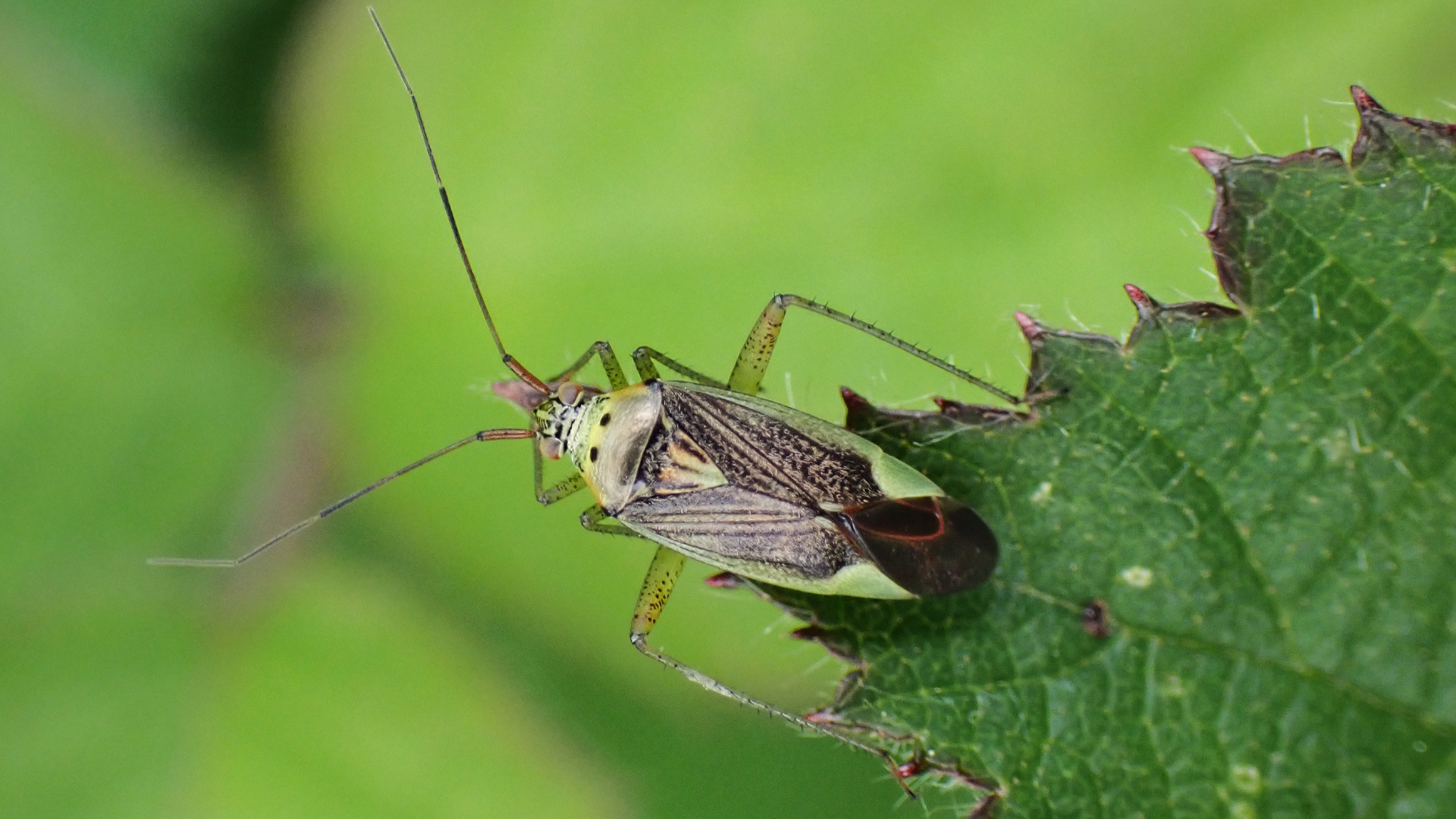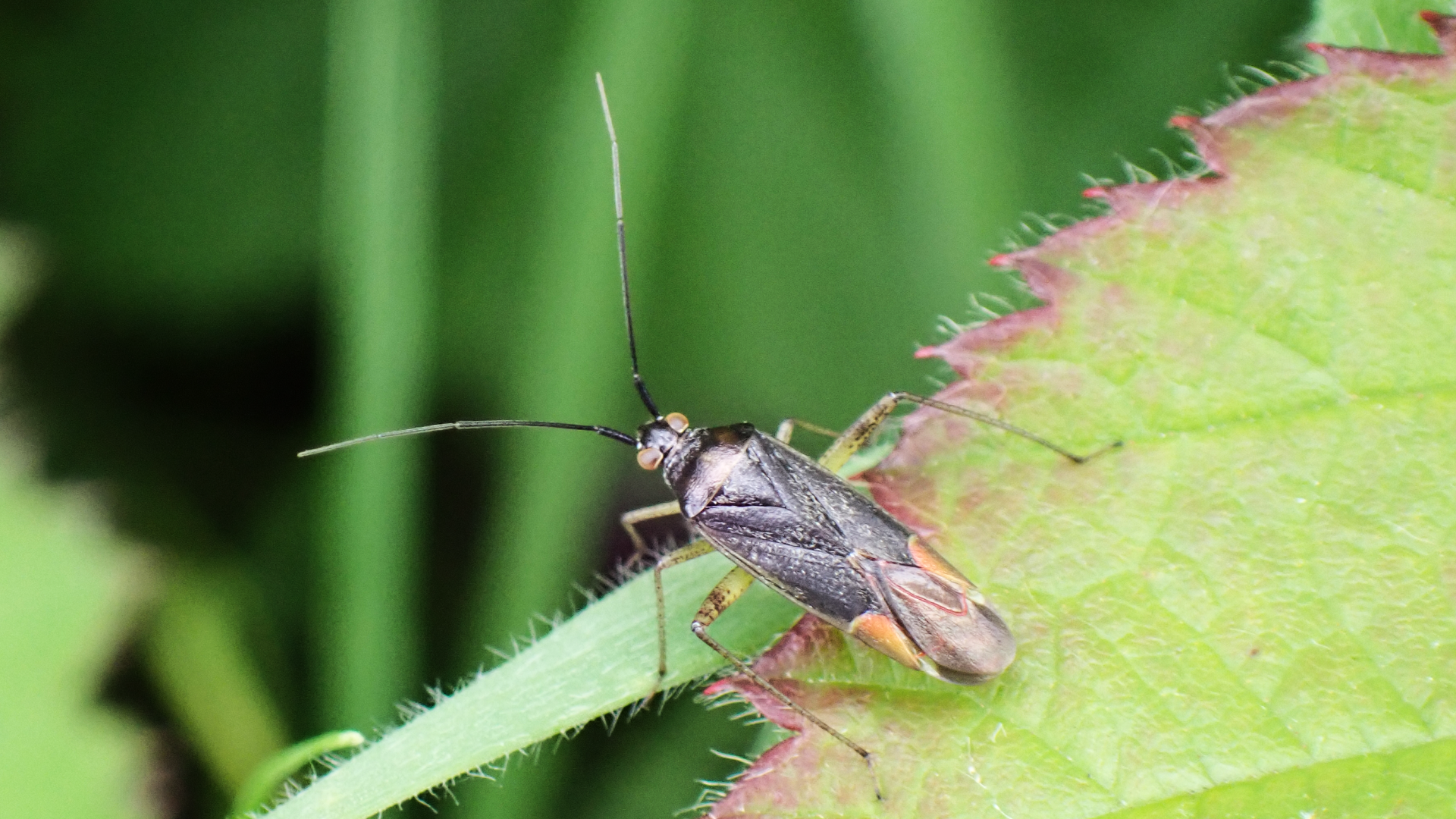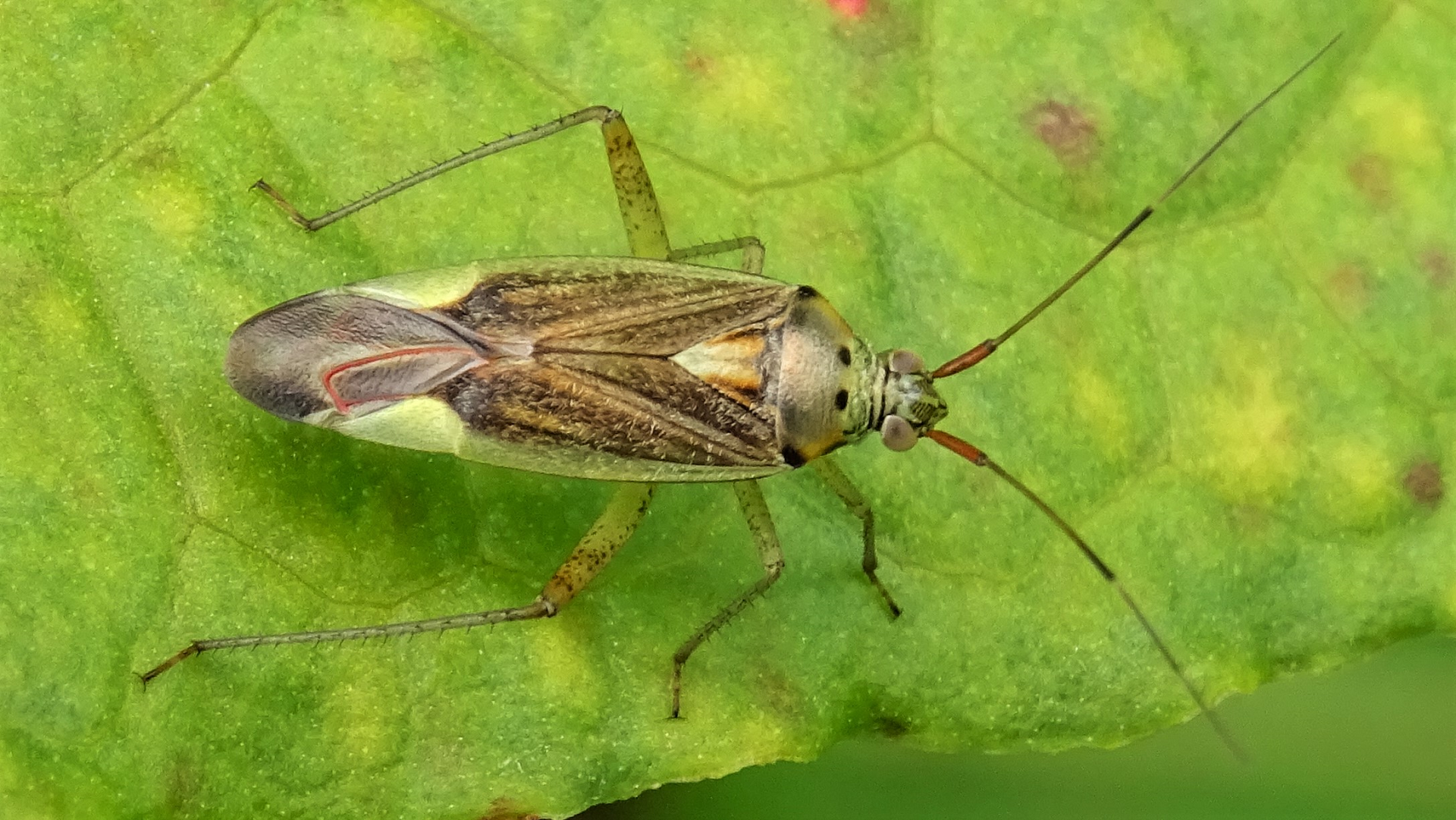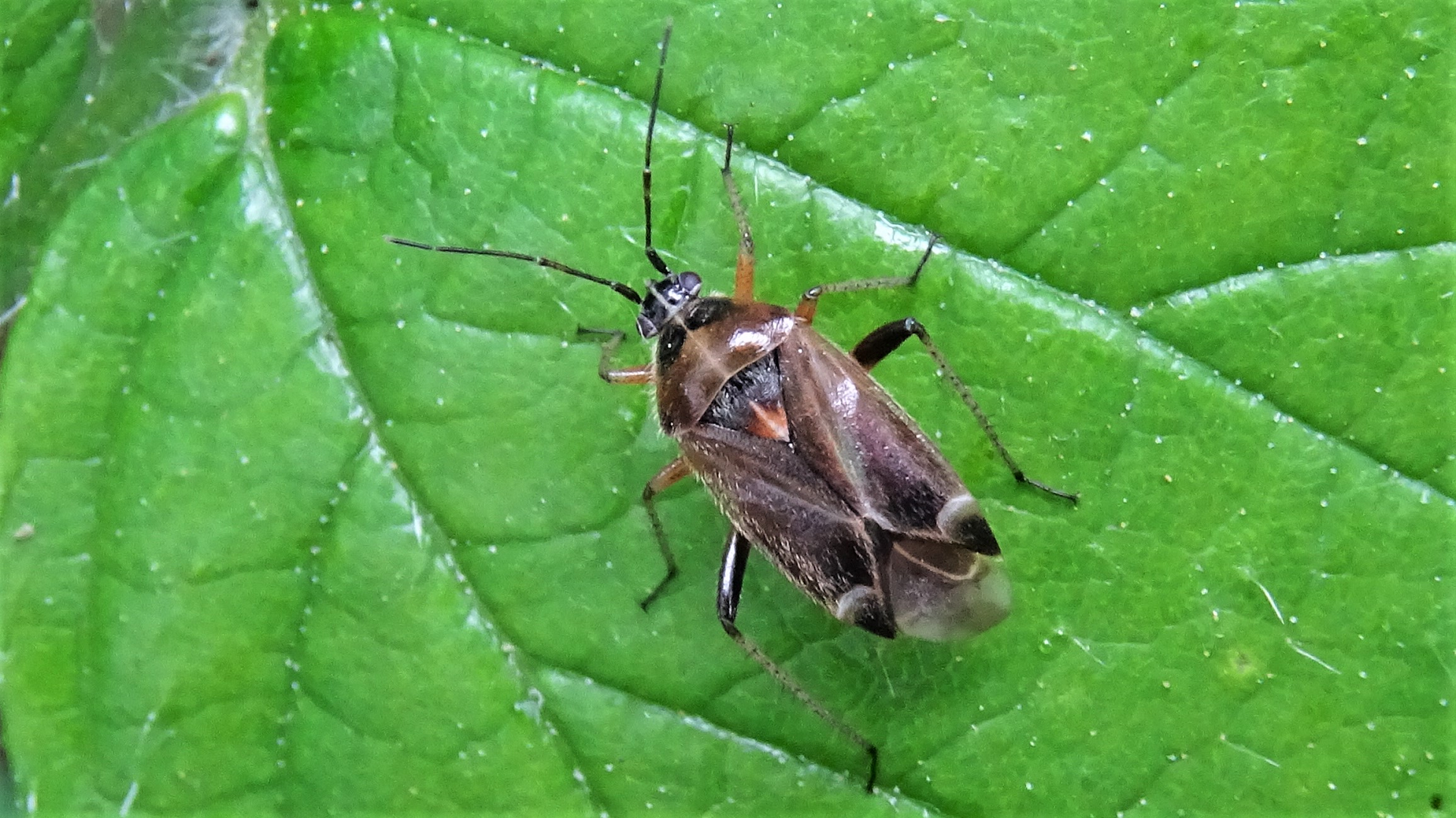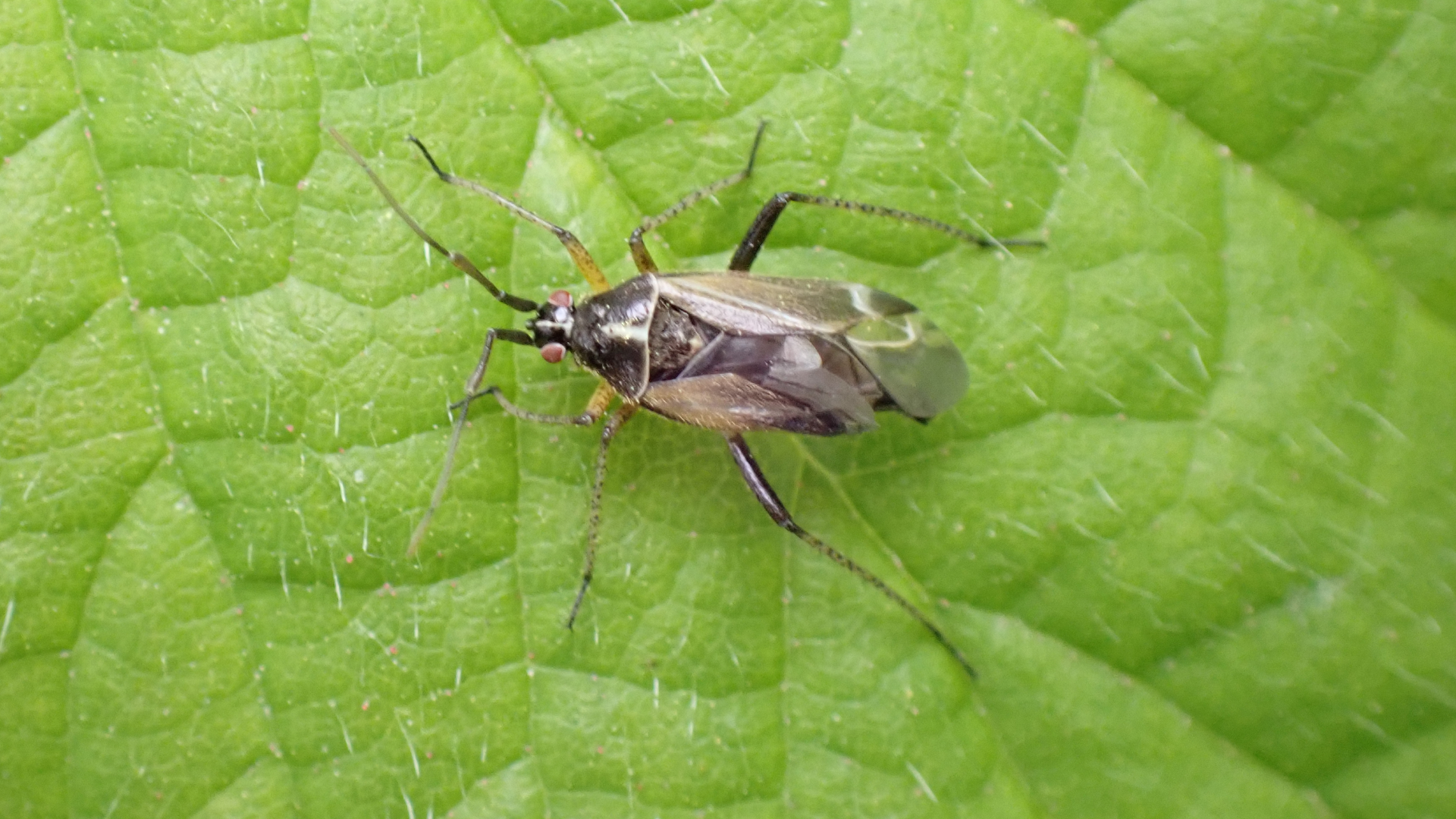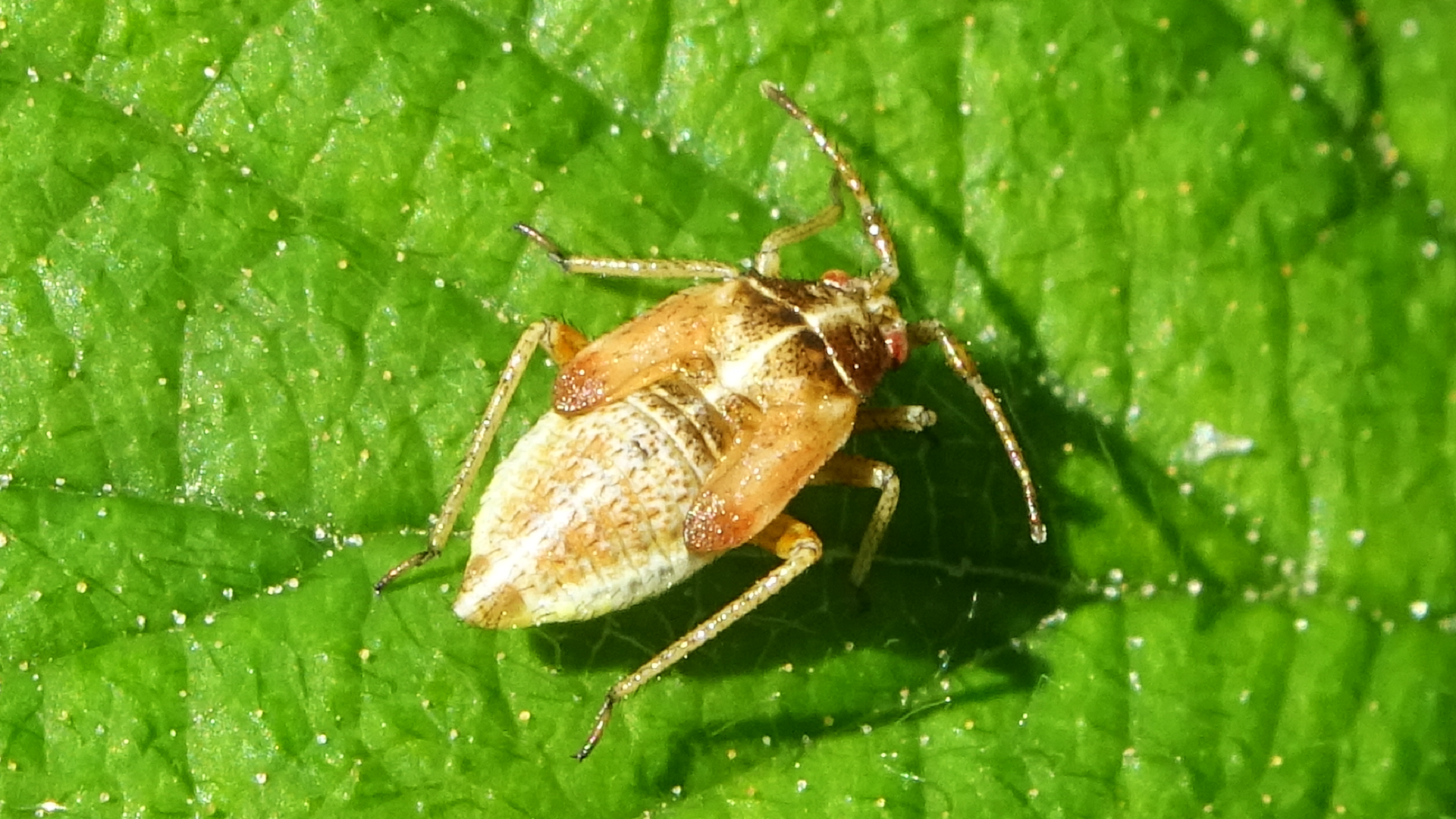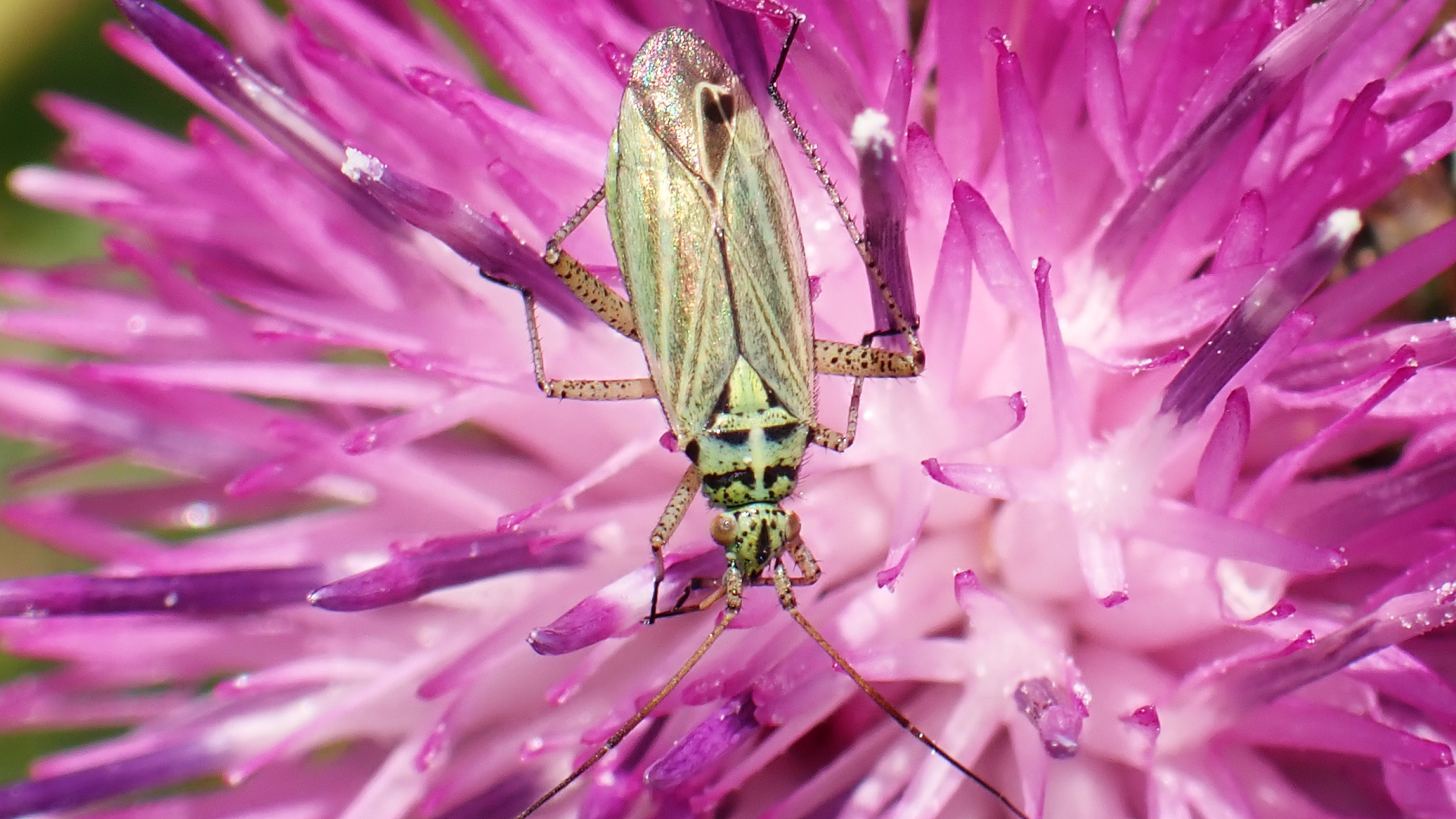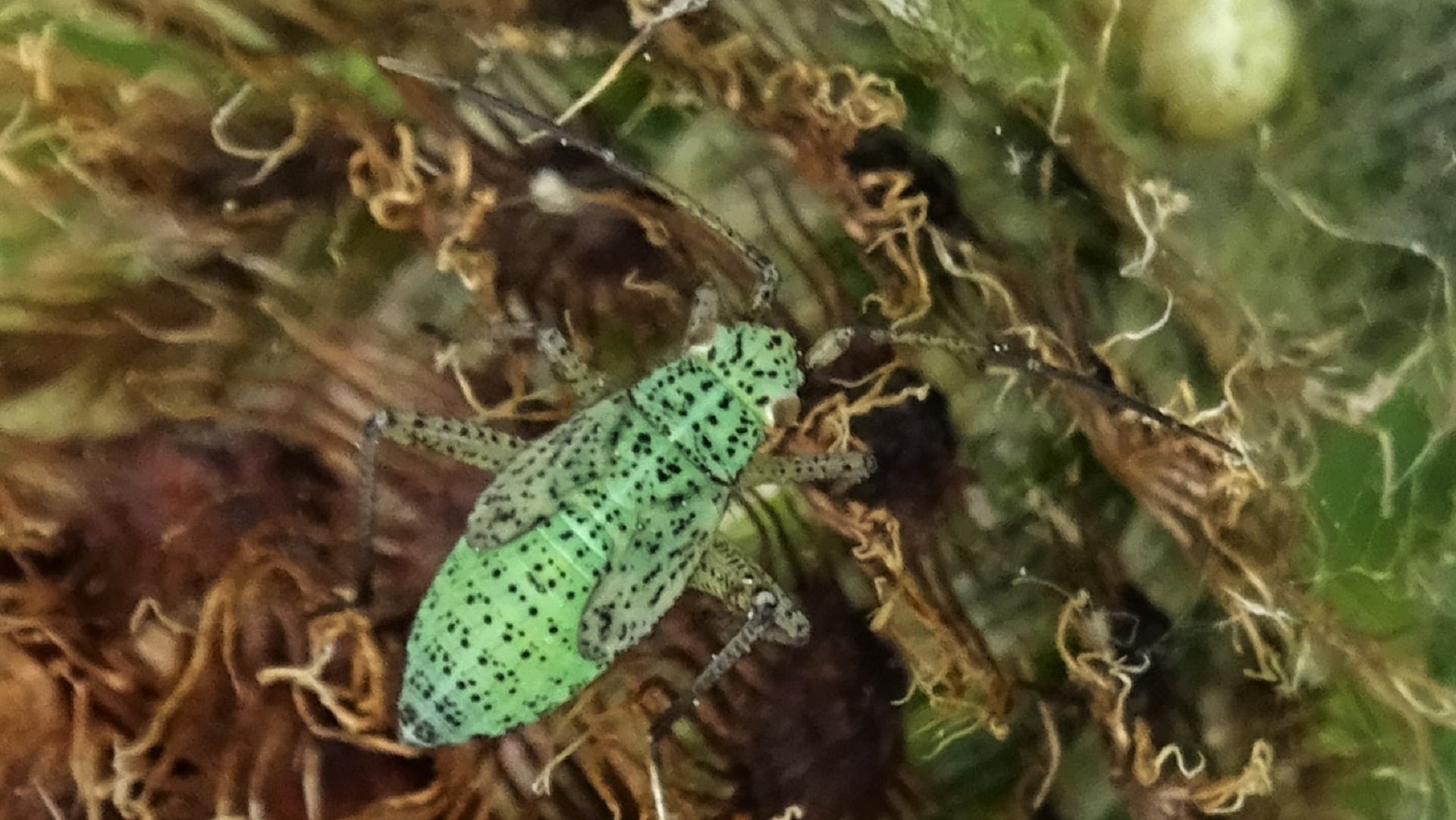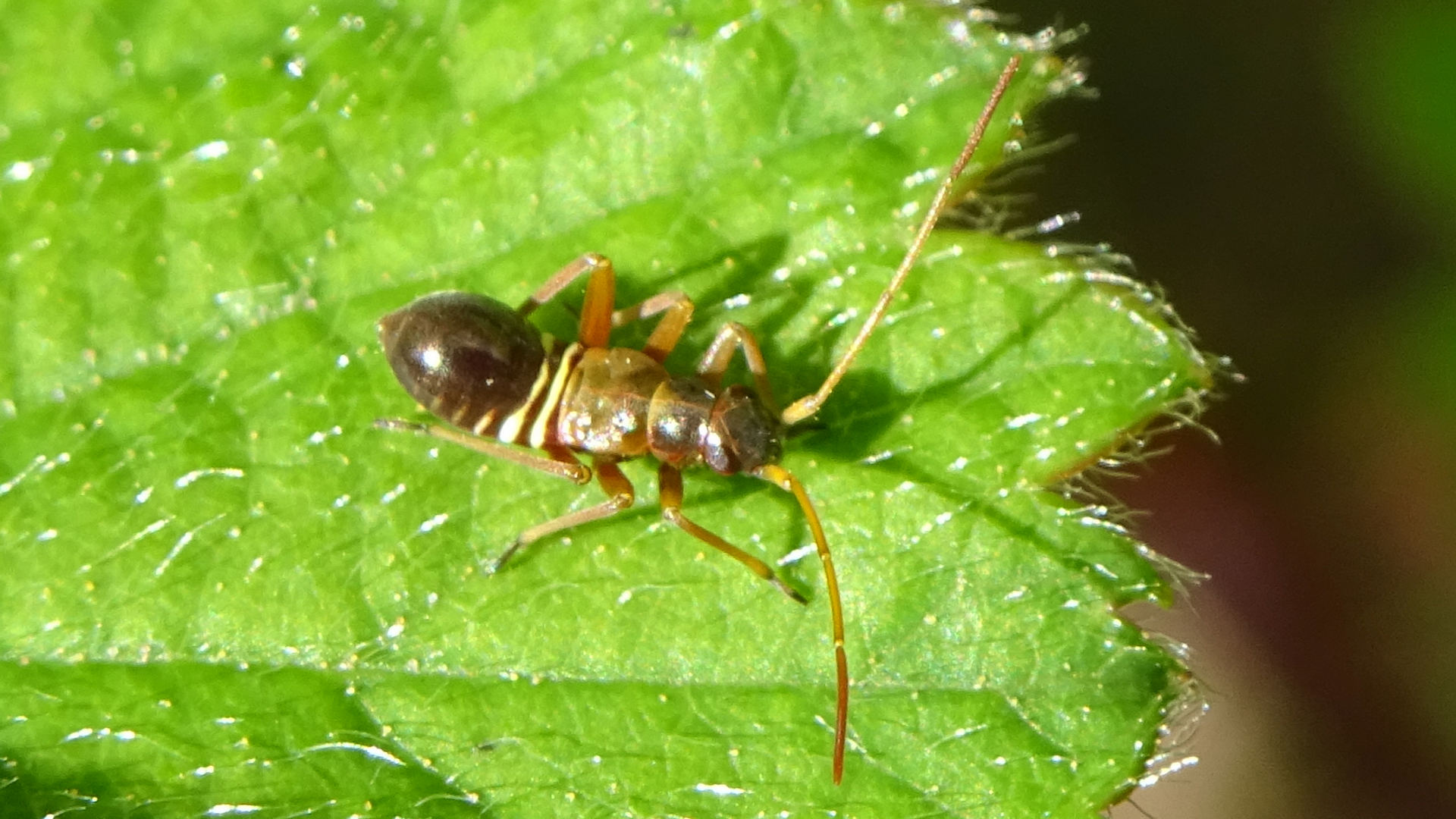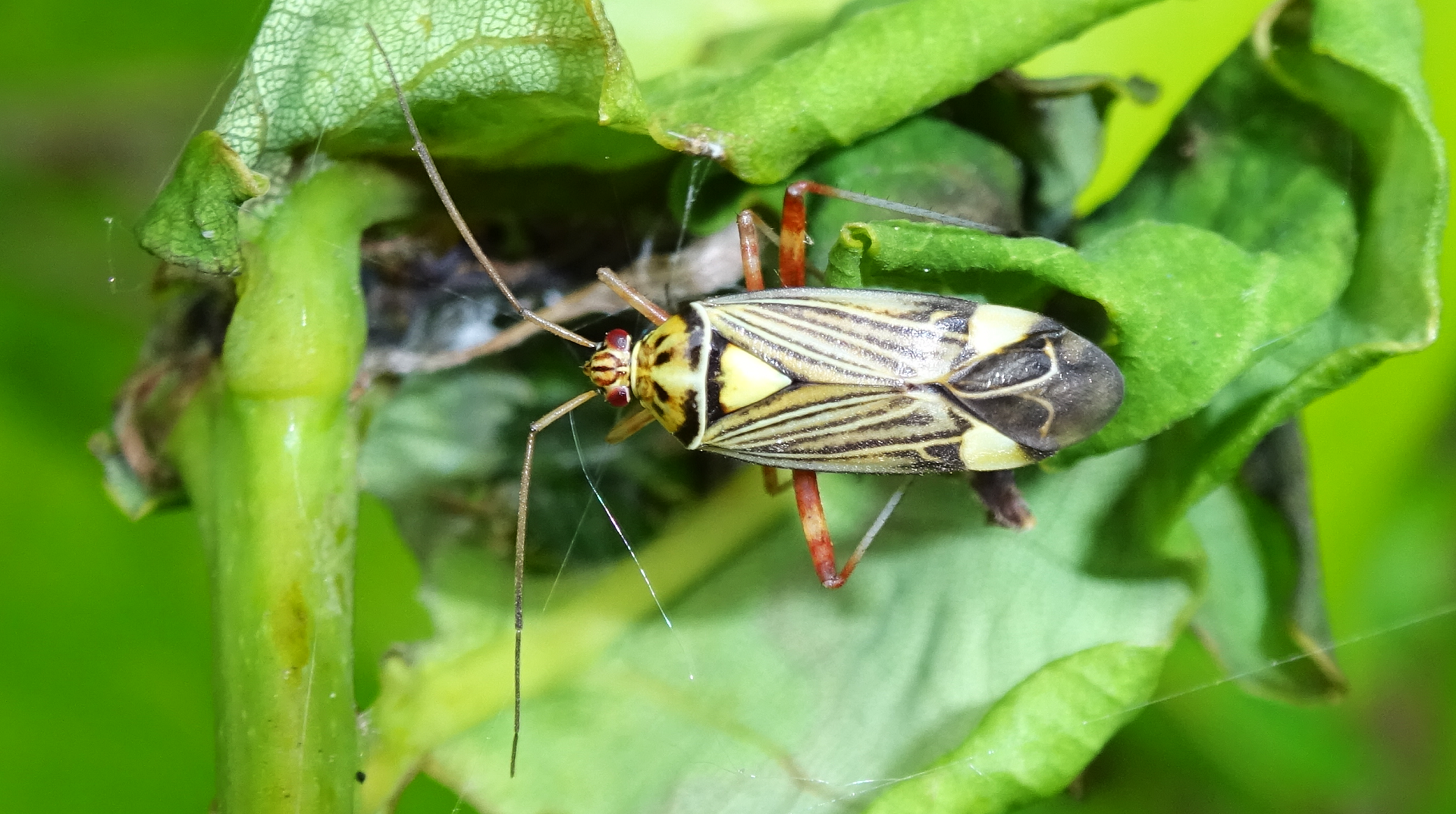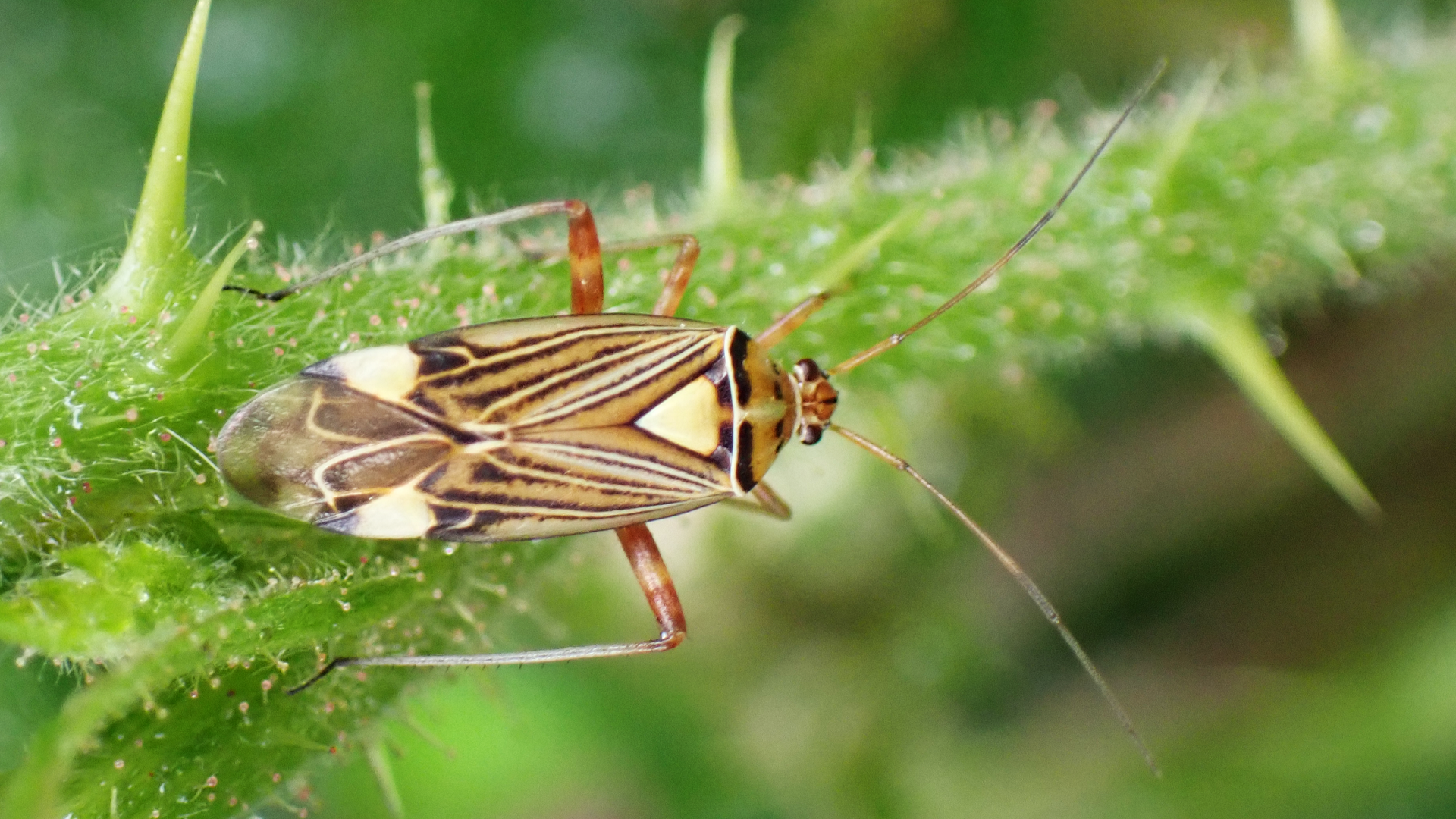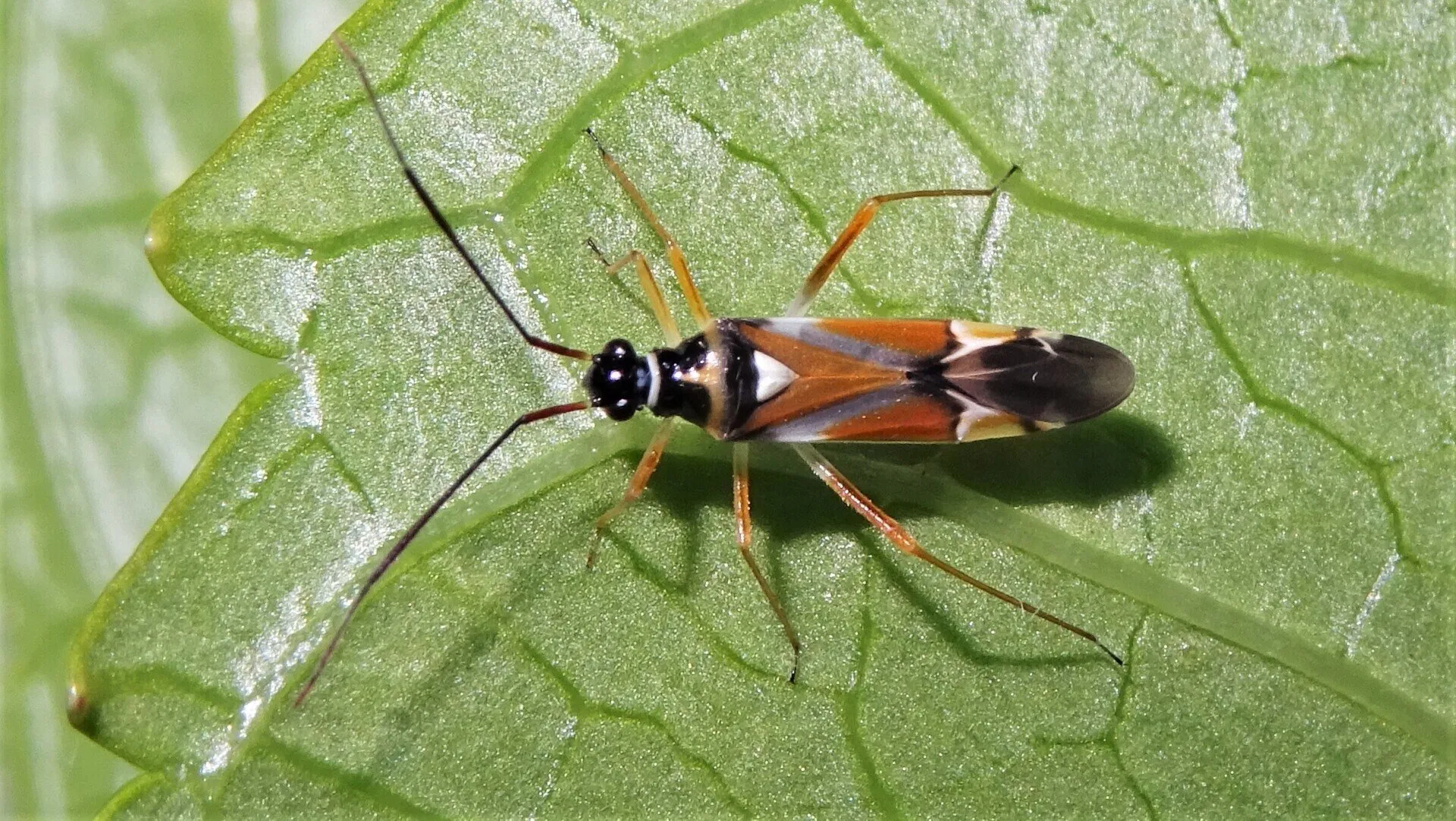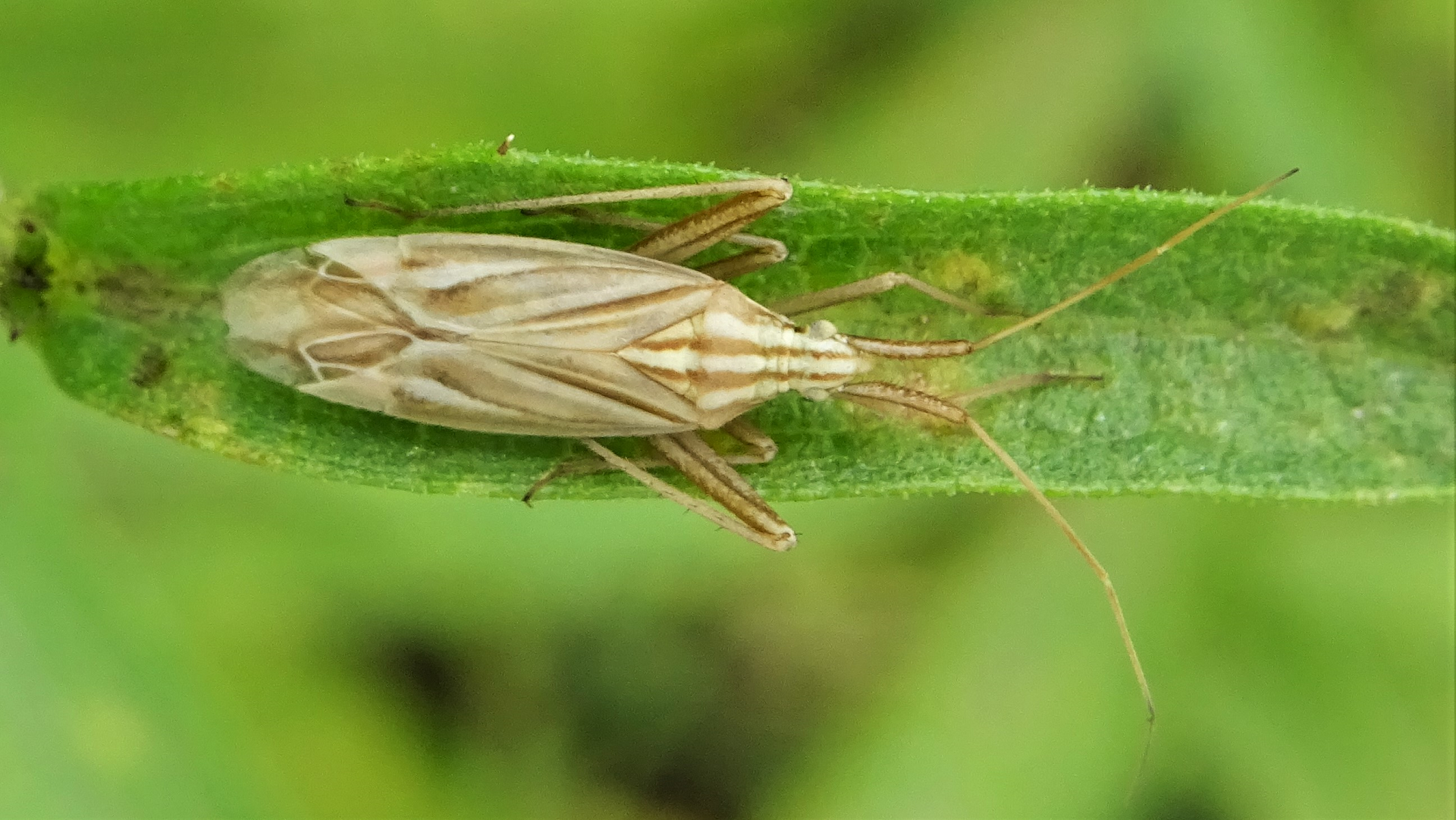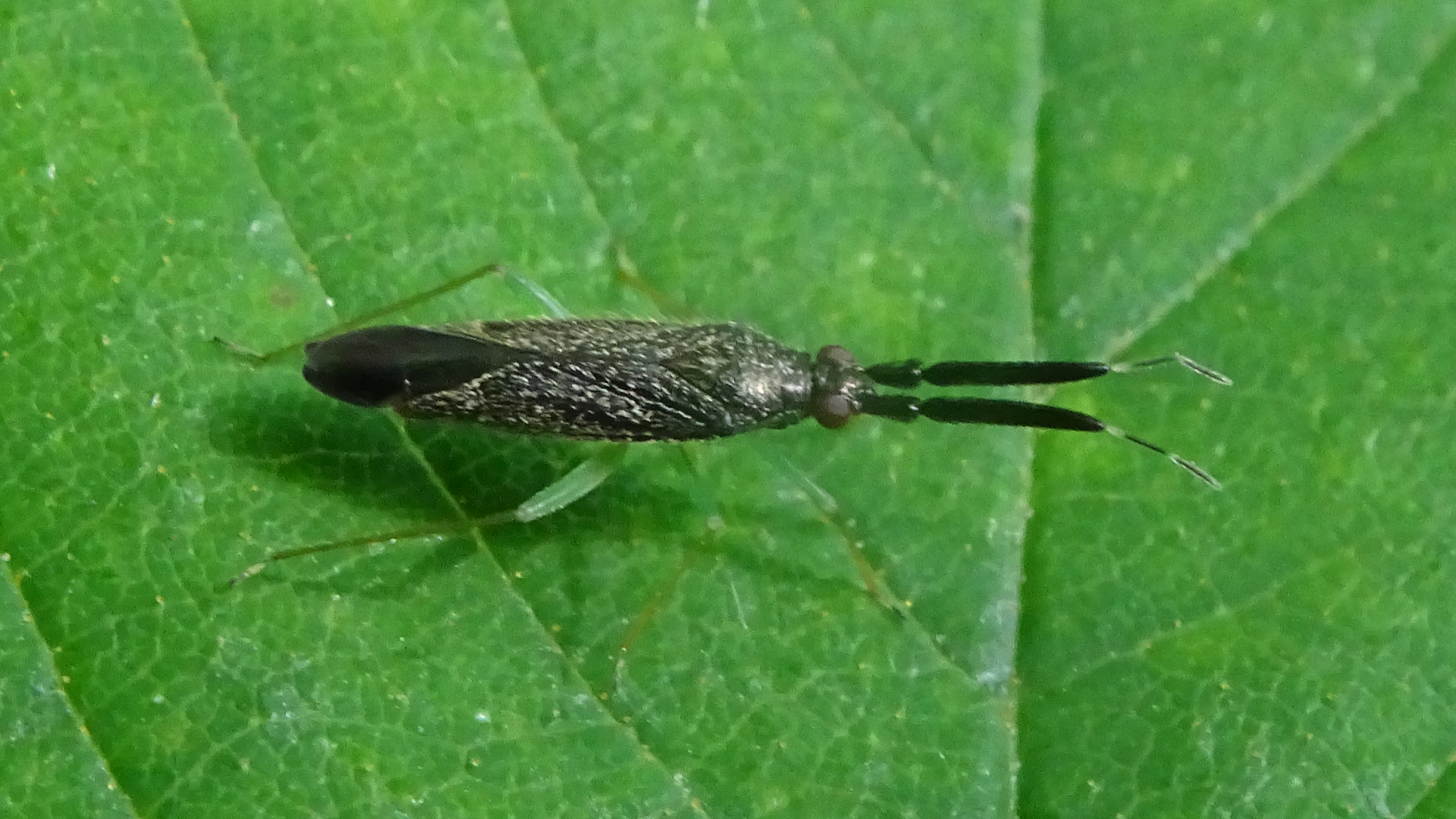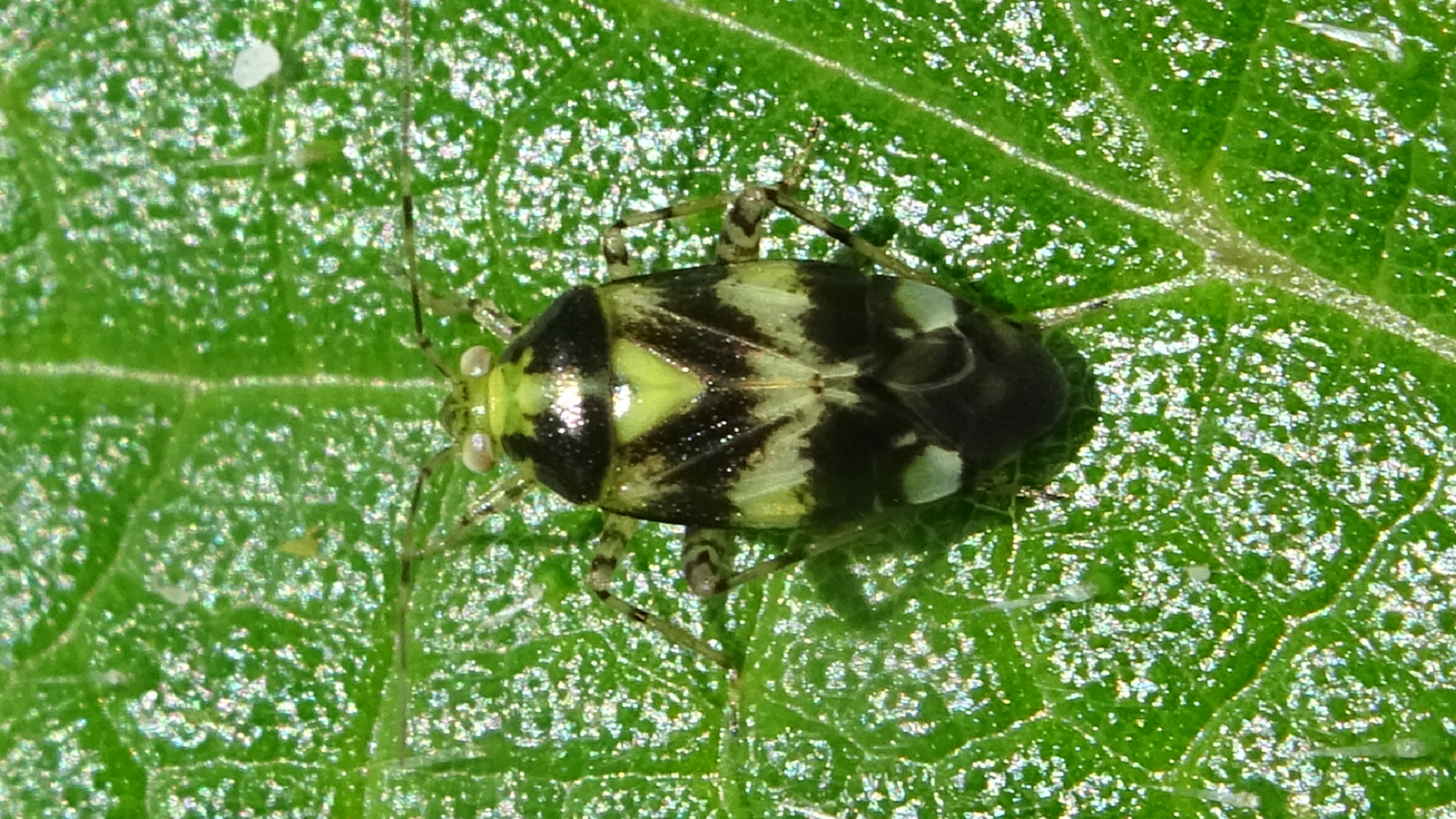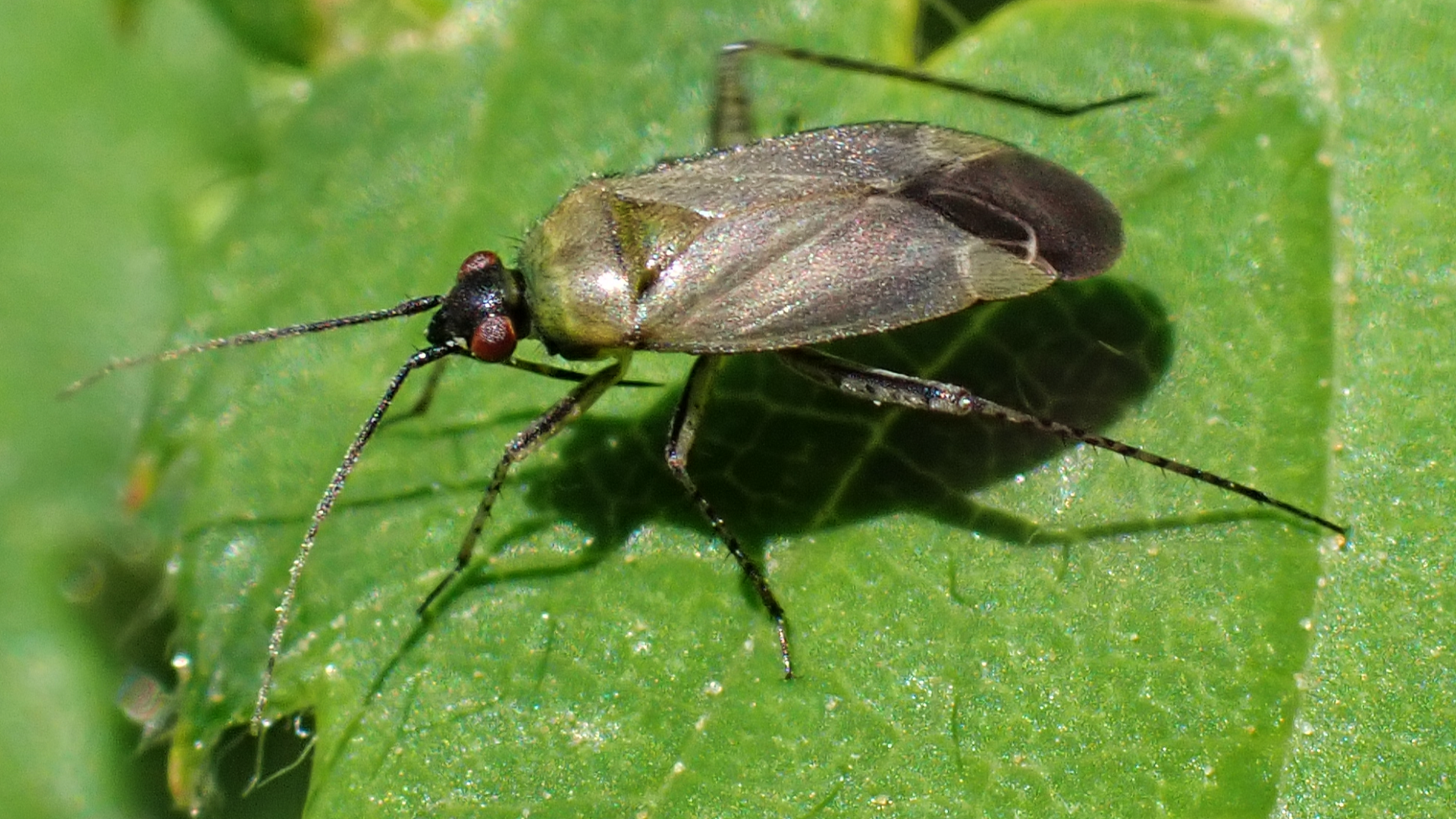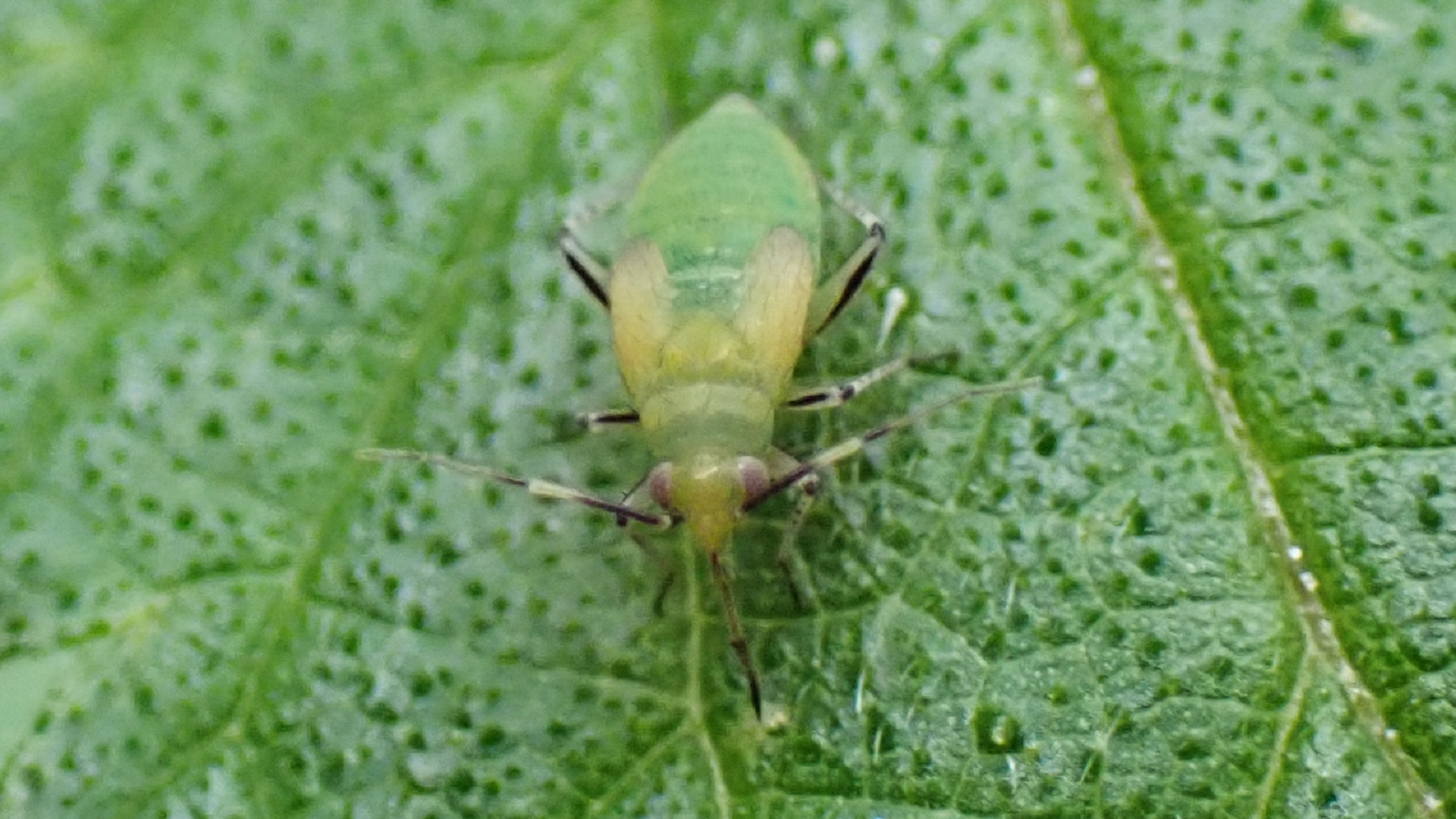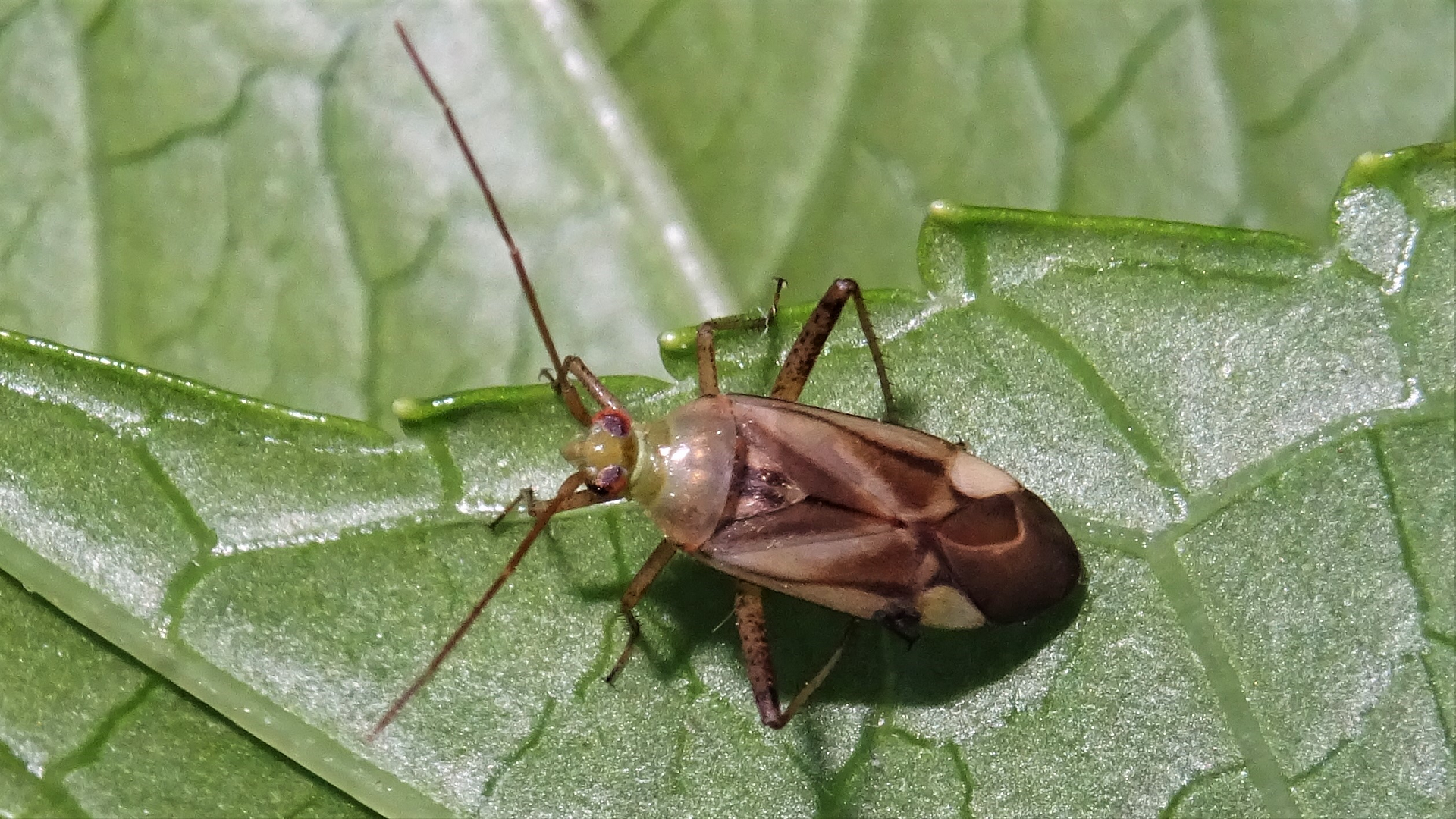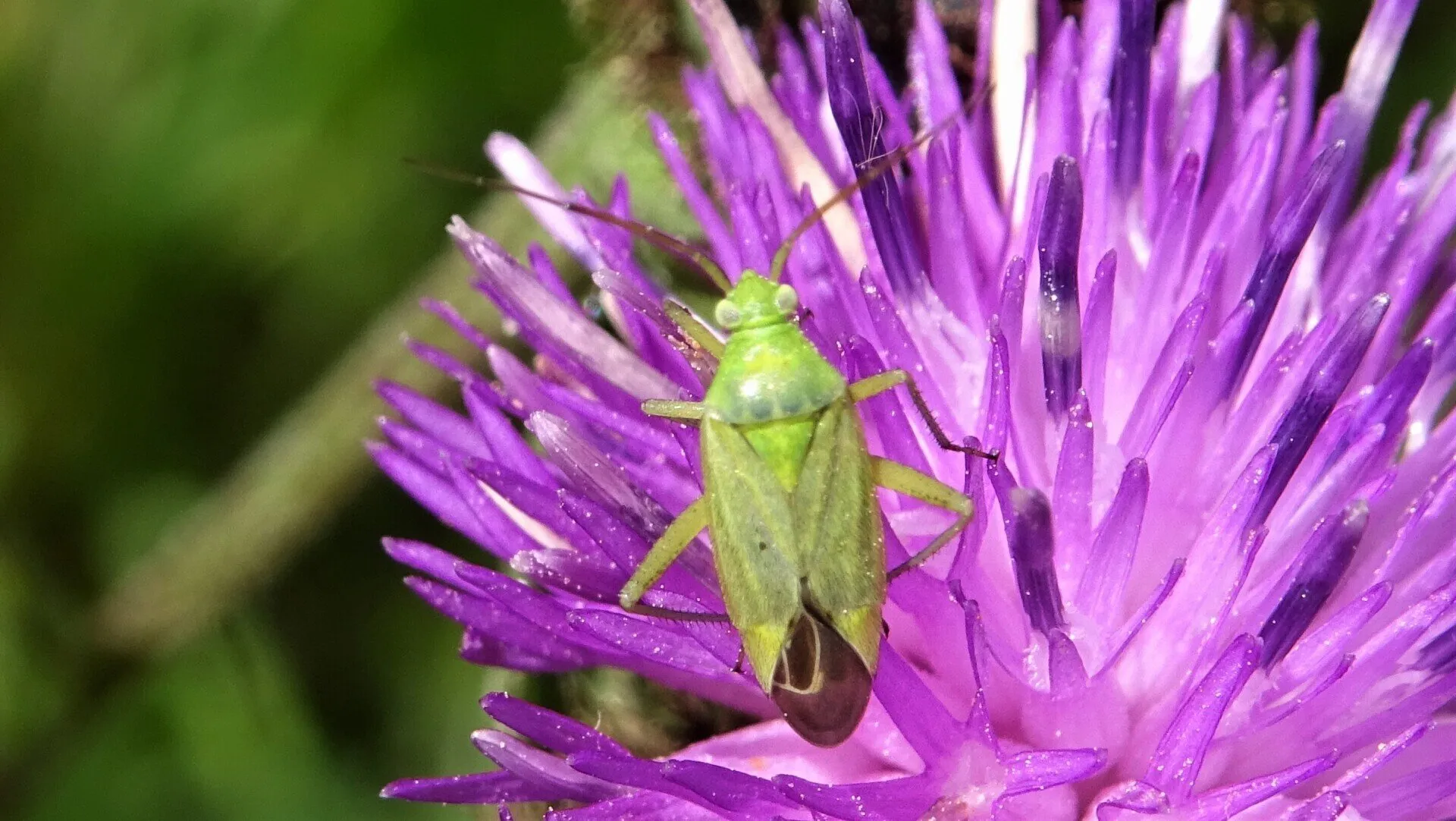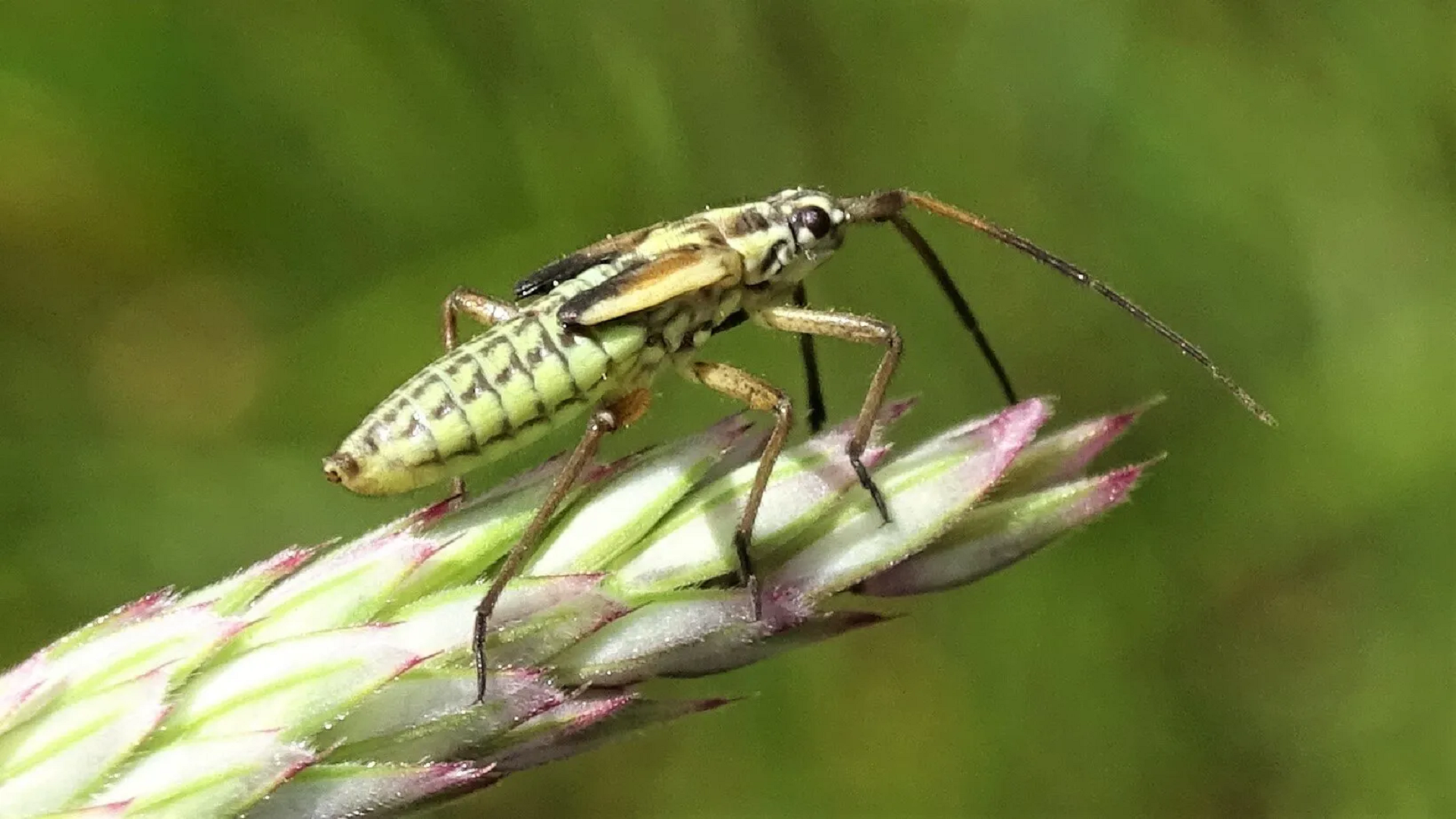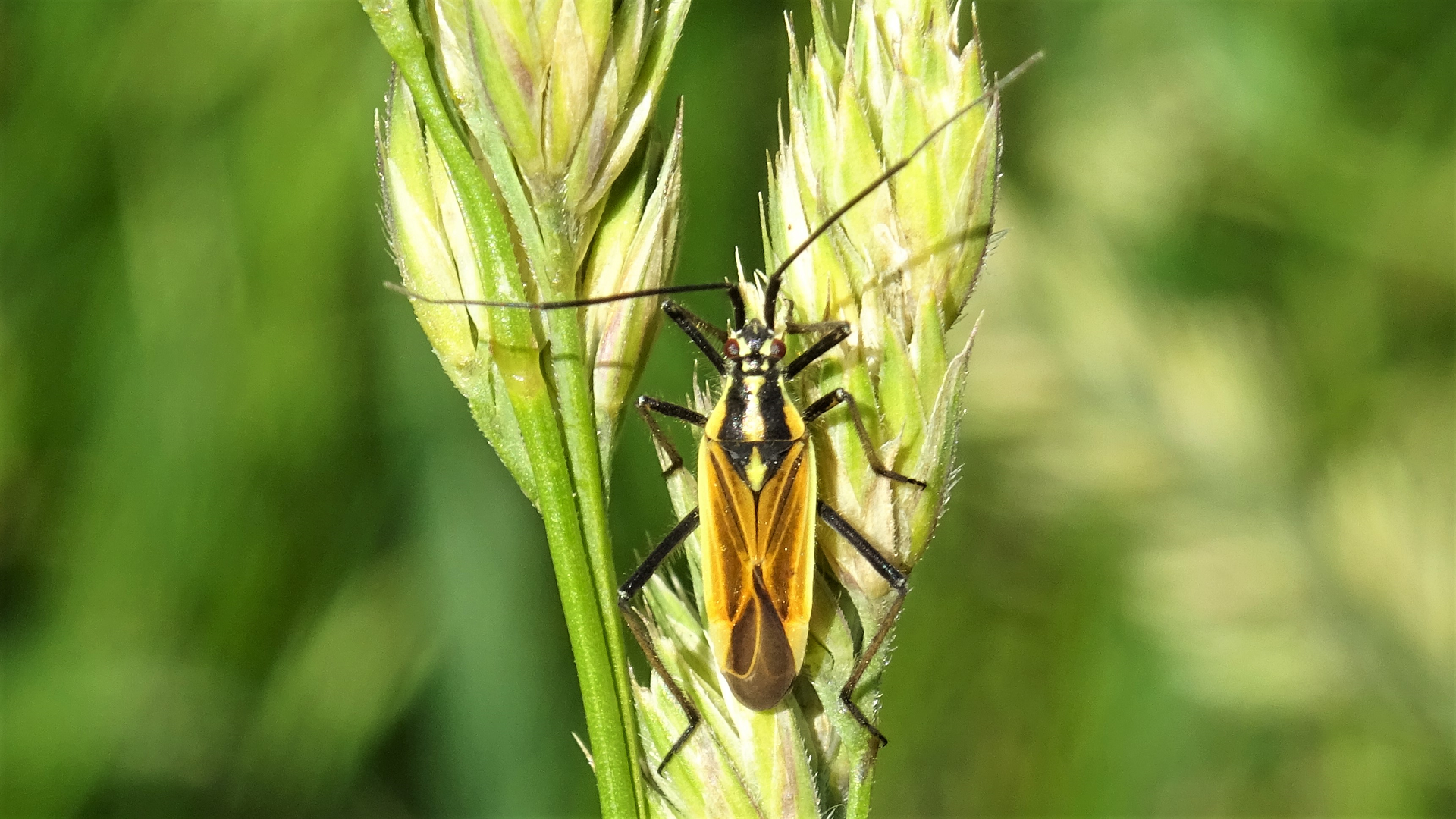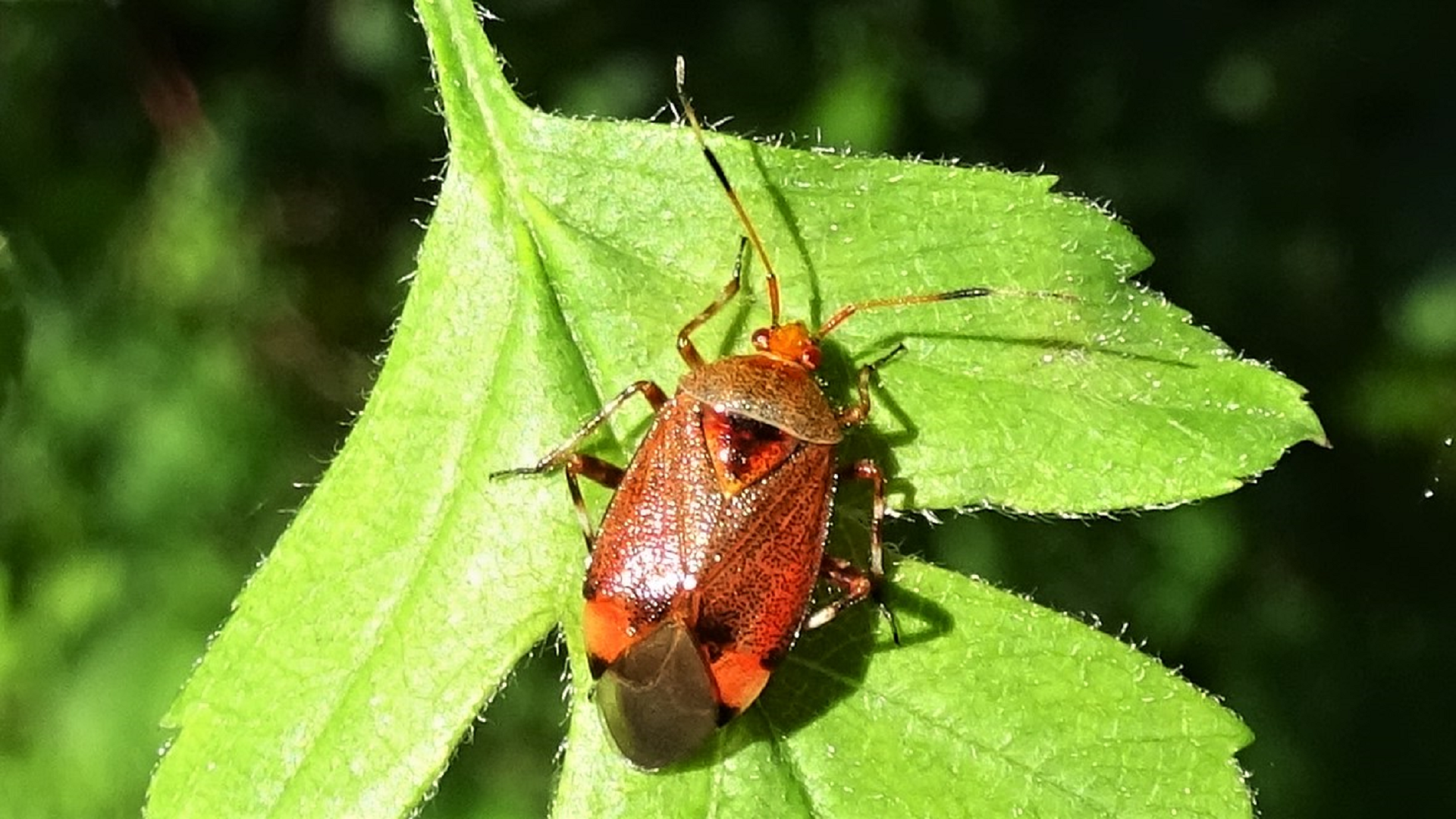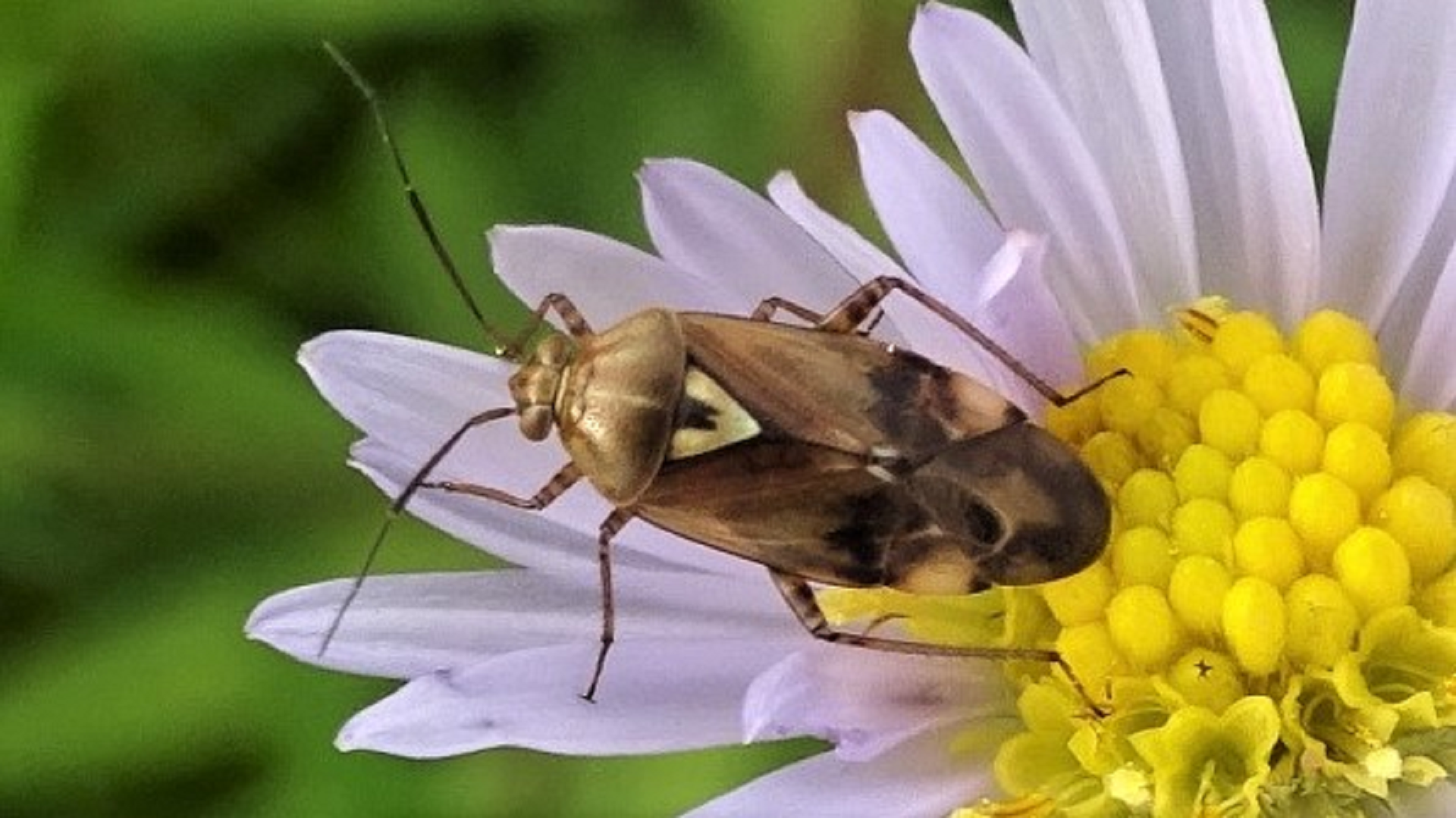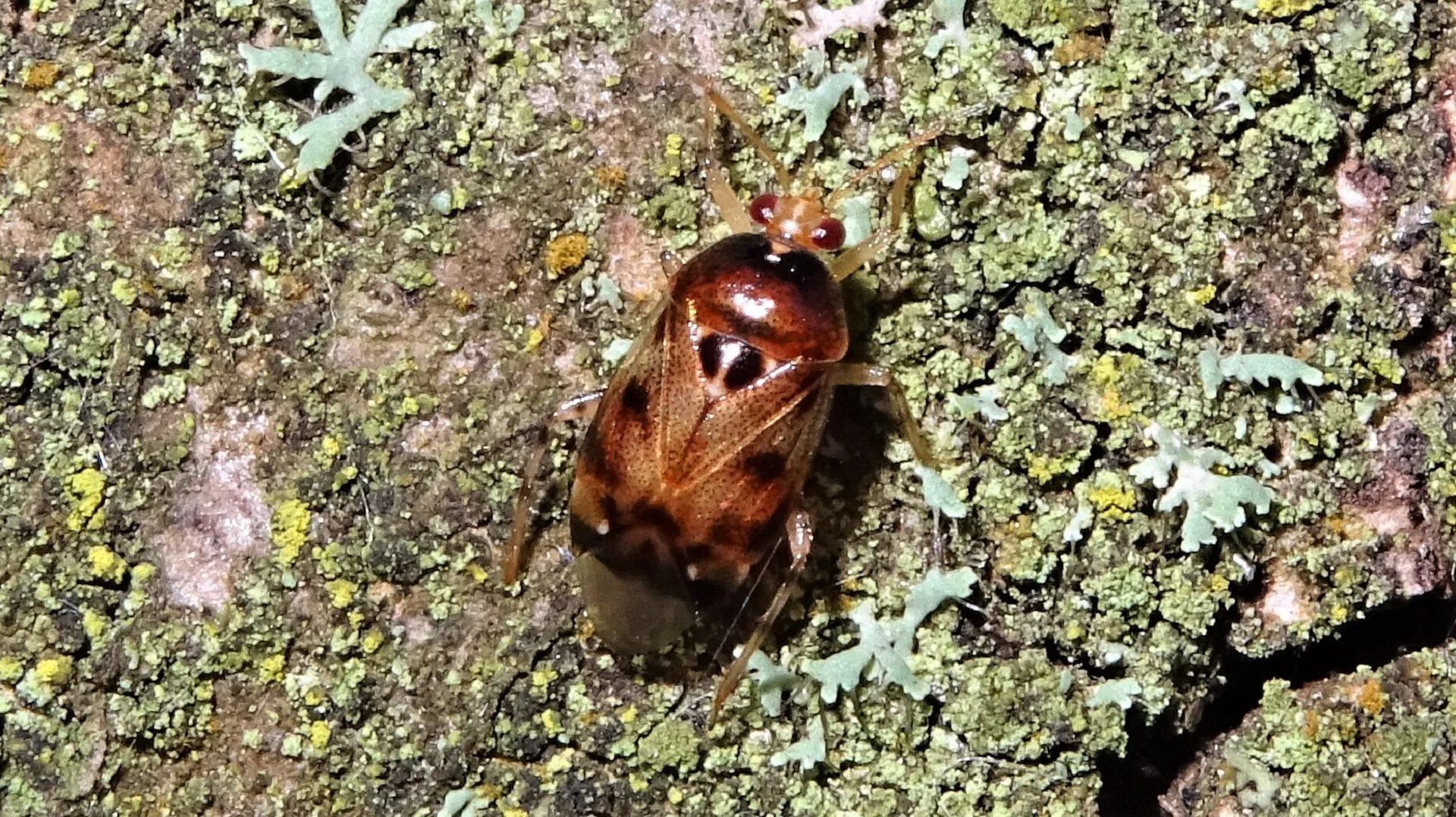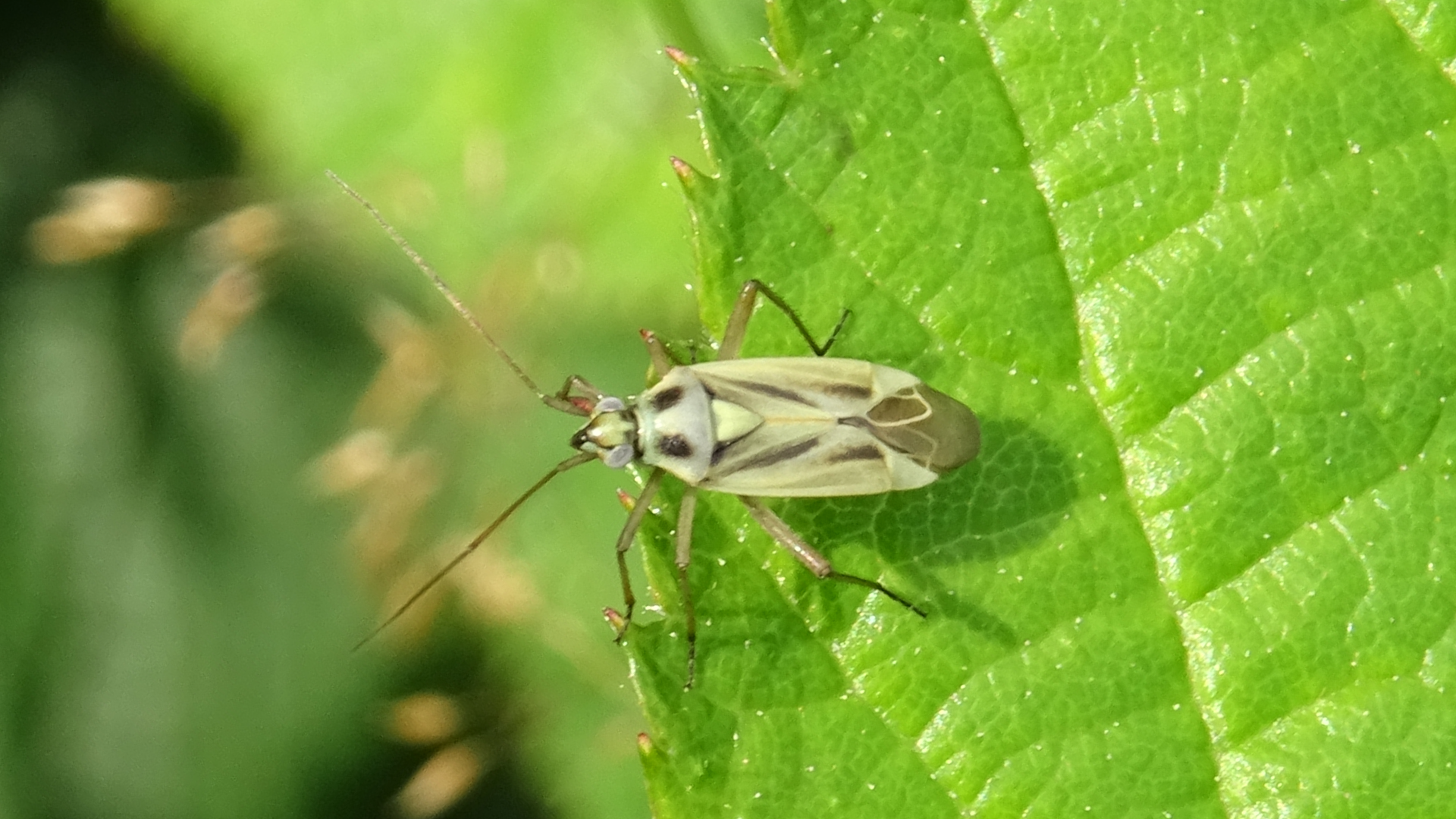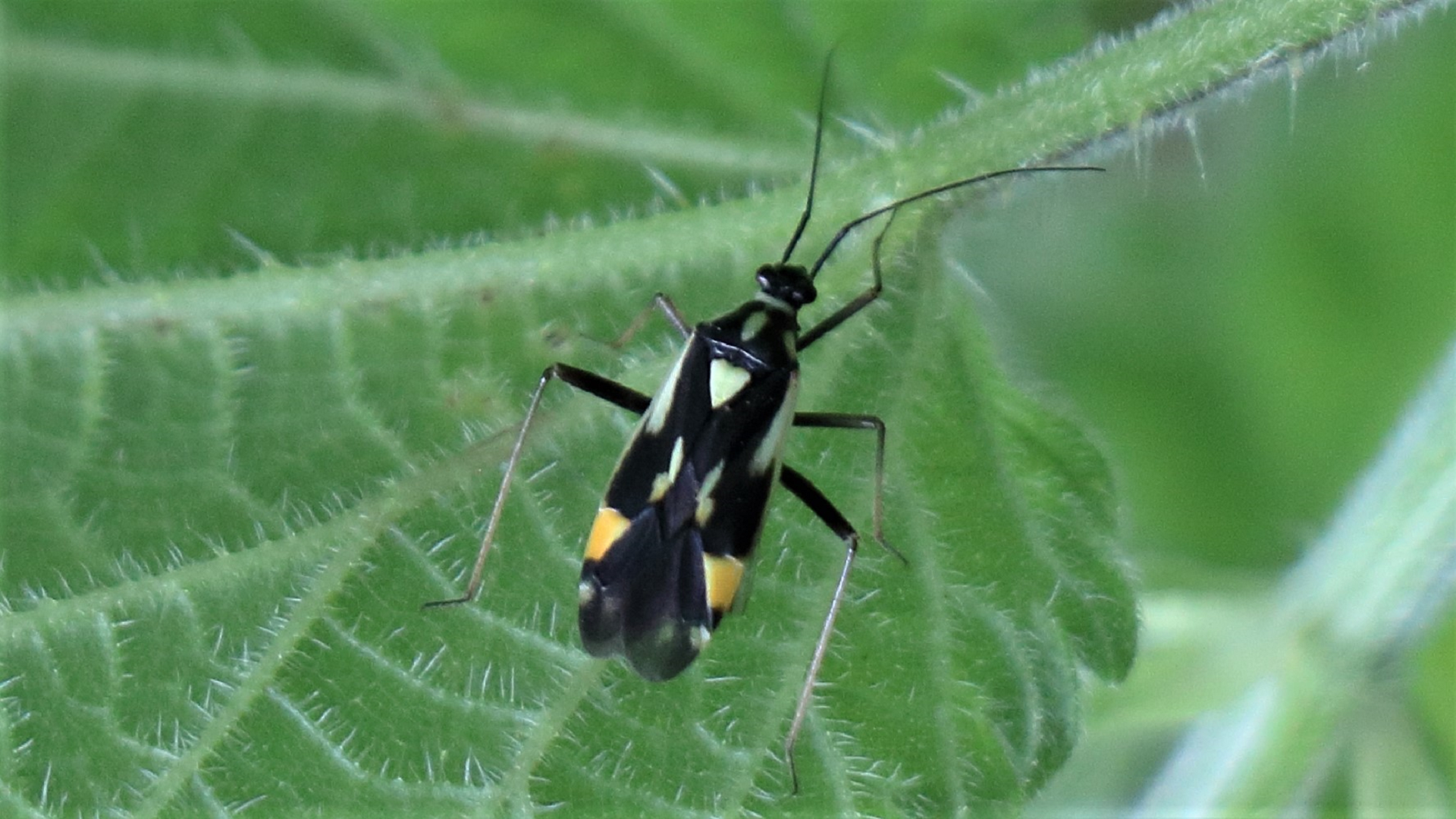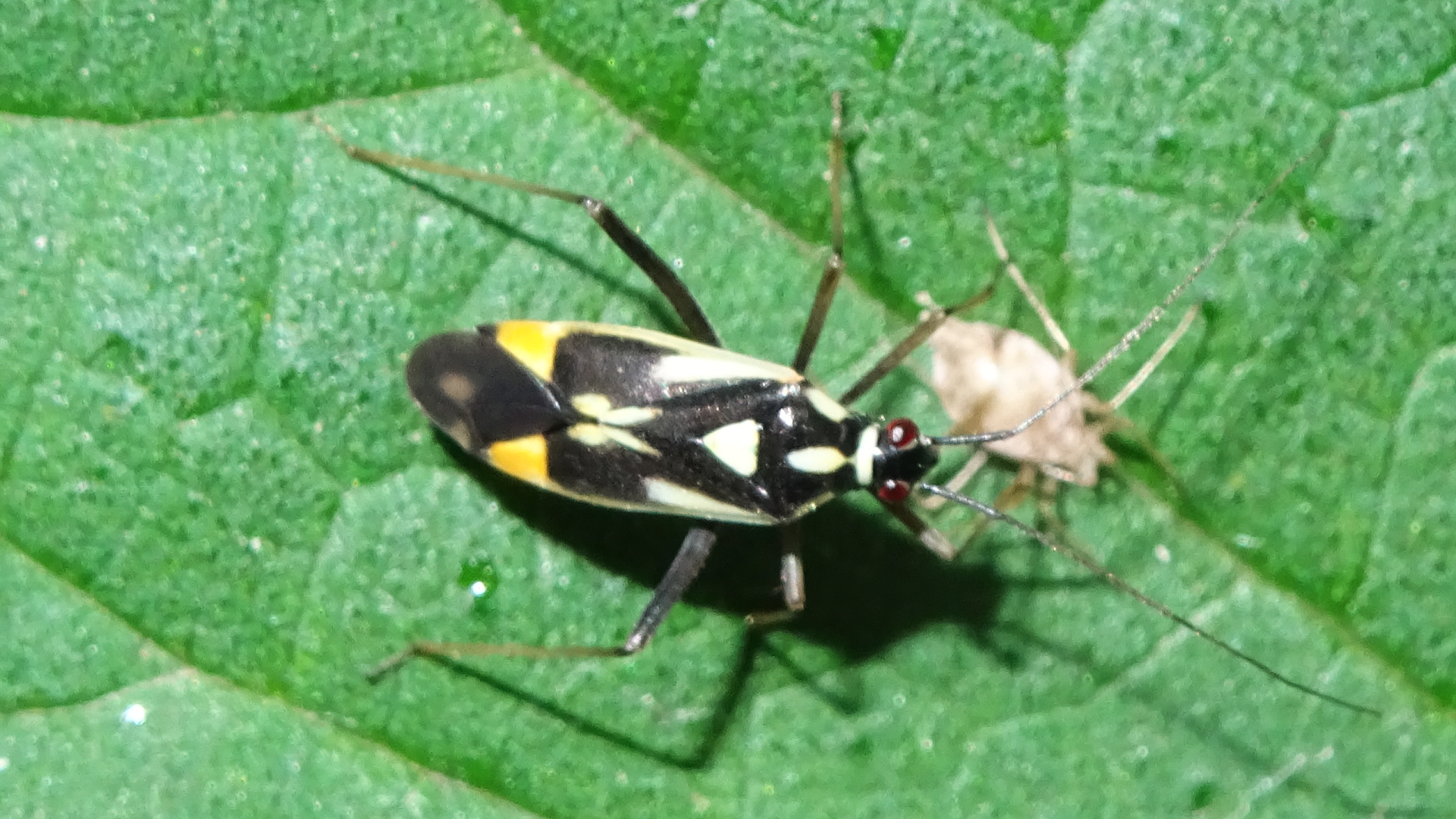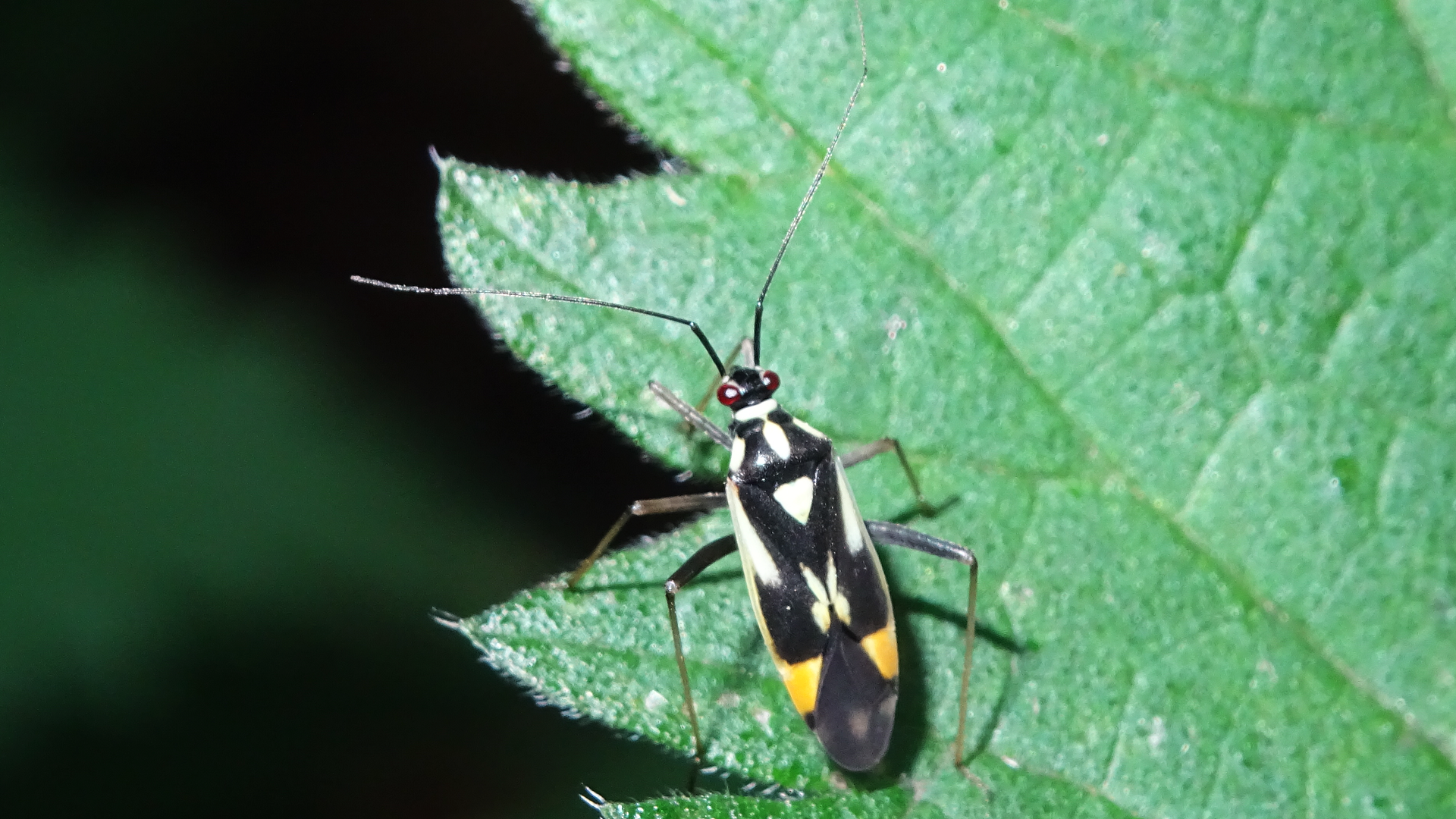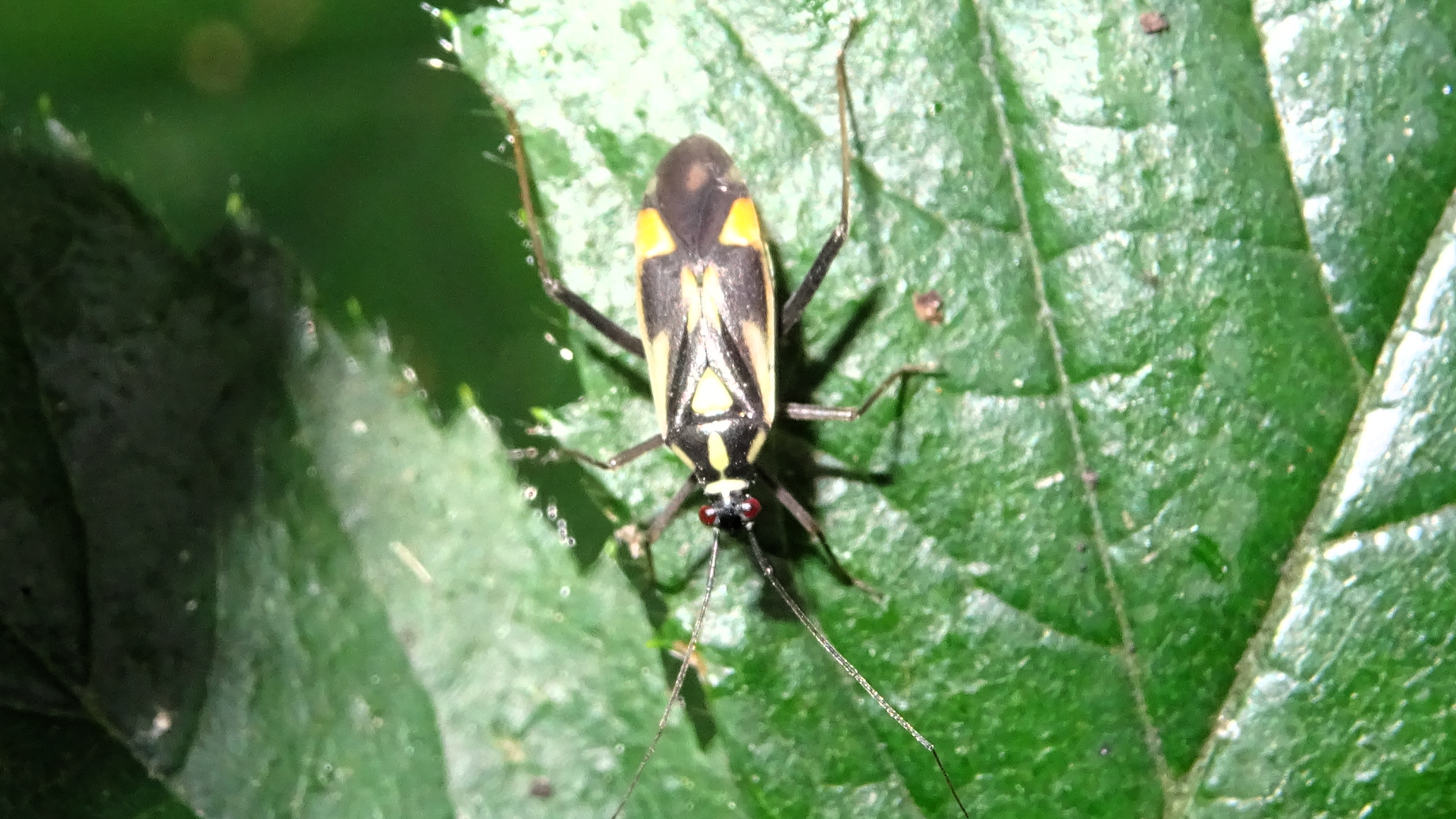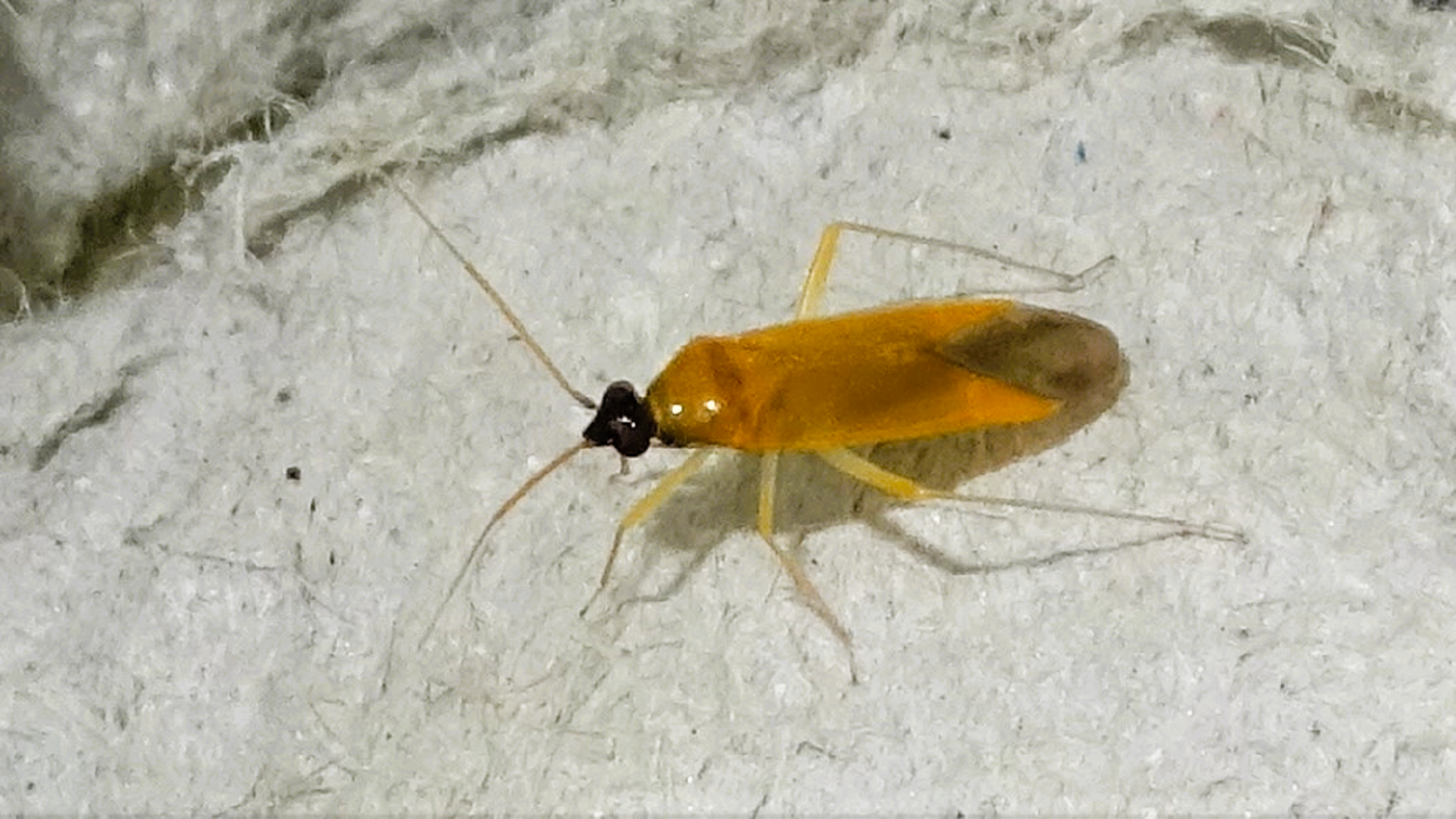INSECTS
HEMIPTERA / MIRID BUGS
The Miridae is a large family of plant bugs. There are over 10,000 known species belonging to the suborder Heteroptera. Some are predatory, however most feed on plant sap. They are often referred to as 'Mirid Bugs' or 'Capsid Bugs'.
Trivial Plant Bug originates from the Mediterranean and the first reported sighting in London occurred in 2009. It is now very common in Hainault Forest. They vary a bit in appearance but females are normally greenish, while males are usually dark with a red wedge-shaped section of the forewing (cuneus). The female's pronotum is usually marked with two dark spots in the centre and dark markings at the hind corners. Adults measure up to 7.5mm in length.
Handsome Plant Bug is very common throughout Britain on oak with adults normally appearing in May and June. They are short-lived, especially the males. The sexes are dimorphic; females are browner and have wider bodies than the males. The bug spends most of the year at the egg stage. Larval development lasts only two weeks. The nymphs are covered in dark hairs and the two basal antennal segments are thicker than the other segments.
Knapweed Plant Bug has vivid colouration and unique patterning making it easy to identify. Adults, 5-6mm long, inhabit knapweed flower-heads from July to September. Knapweed is its foodplant.
Fine Streaked Bugkin is a plant bug found throughout Britain normally associated with oak and hawthorn. This species is predatory mostly feeding on small insects and their larvae and eggs. Adults usually appear late May or early June.
Striped Oak Bug is a distinctive plant bug associated with Oak trees. Females normally have lighter colouration than males. Larvae hatch during April from overwintered eggs and become adults from mid-May onwards. Adults are 7-8mm in length.
The Oak Mirid Bug is an attractive insect that overwinters as an egg, hatching in spring as a pale whitish blue-green larvae. Adults are mainly seen from late May to July and are associated with oak trees. Mostly predatory feeding on small creatures such as aphids and bark flies. They also feed on unopened oak catkins and young acorns. Length: 6-8mm.
The Long-legged Grass Bug lives in grassland. Adults, 9-11mm long, are seen in July and August. It has a long 1st antennal segment and diagnostic markings; stripes run the full length of the head, pronotum and scutellum. Once associated with coastal areas, but now becoming more common inland.
The Thick-antennae Plant Bug is found on trees and shrubs, especially nettles. It is easy to identify by the broad, flattened, second antennal segment, dark brown body colouration and green legs. As well as feeding on plant buds and unripe fruits it consumes small insects. Its eggs hatch during May with the reddish nymphs turning into adults from June. Adults, about 5mm long, are usually seen from July until October.
Nettle Plant Bugs are common bugs, 4-5 mm in length, associated mainly with stinging nettles. They can be found as adults throughout the year with varying colouration that is strongly related to age. In spring following hibernation, the ground colour is generally darker and the cuneus more orange-yellow. When the new generation of adults appear in mid-summer they are normally lighter with less intense markings.
Nettle Leaf Mirid is an extremely common bug found on nettles. The adults have a ground colour that varies from pale olive-green to almost black. The dark edges of the hind femora are a useful identification characteristic also present in the late instars. Adults are about 4mm long, nymphs are smaller.
Lucerne Bugs are found in grassland from July until October on various herbaceous legumes including clover and vetch. They are about 8-9 mm in length. Mirids in the genus Adelphocoris share similar characteristics such as a large elongate body, large eyes, long antennae, prominent tibial spines and a long rostrum reaching the hind coxae.
Potato Capsids are found in the meadows from May until October where they feed on a wide range of plants, particularly nettles, composites and clovers. The two spots on the pronotum are often absent, so are the dark markings at the top of the scutellum. Mature males are tinged reddish-brown. The tibial spines are shorter than the width of the tibia, and the length of the 2nd antennal segment is roughly equal to the 3rd and 4th combined. They are about 7 mm in length.
Meadow Plant Bug is a large bug with a preference for damper habitats where it feeds on grasses. There are two very similar species, both of which are sexually dimorphic. Males are always fully-winged while females are usually partly-winged. Leptopterna species often have reddish or orange-yellow forewings. They have a transverse furrow between the eyes and the legs and antennae are covered in long dark hairs. The second antennal segment of the female is thinner than the base of the front tibia. In males the colour darkens with age, from black and yellow to black and orange-red. The length of the 2nd antennal segment is much greater than the 3rd and 4th combined. Normally seen from June until September these bugs are about 8 mm in length.
Hawthorn Bug is a large brick-red plant bug first recorded in Britain during 1951. Adults are found on mature heavily-fruiting hawthorns growing in open locations during June and July. They measure about 9-10 mm in length.
Lygus Plant Bugs belong to a genus that are one of the most problematic to identify. The five UK species overlap considerably in colour, markings and size, meaning many specimens cannot be determined.
Oval Oak Bug is a predatory orangish-brown insect that inhabits a wide range of plants, especially oak. Adults overwinter and mate in spring. They are about 4mm long.
Timothy Grassbug (6-7mm) is a common species seen from June until September. Males are typically yellow with substantial dark markings on the pronotum and forewings. Females are greenish-yellow with fewer dark markings. With age both sexes turn deeper in colour and more strongly marked. The adults and nymphs feed mostly on the flowering heads of grasses.
Orange-spotted Plant Bug
Grypocoris stysi
(6-8 mm) is a plant bug associated with nettles (mostly), umbellifers and white bryony in woodland.
The adults and larvae feed on flower heads and also predate on small insects such as aphids. Nymphs hatch from eggs in May and become adults during June and July. The adults are fairly short-lived and seldom survive past August.
Phylus melanocephalus (4.5-6mm) is a fairly long and slender plant bug that is also partly predatory. This species is found throughout Britain on oak from June until August. The forewings range from yellow to orange-red but the head is always dark brown or black.
© hainaultforest.net. All rights reserved.


